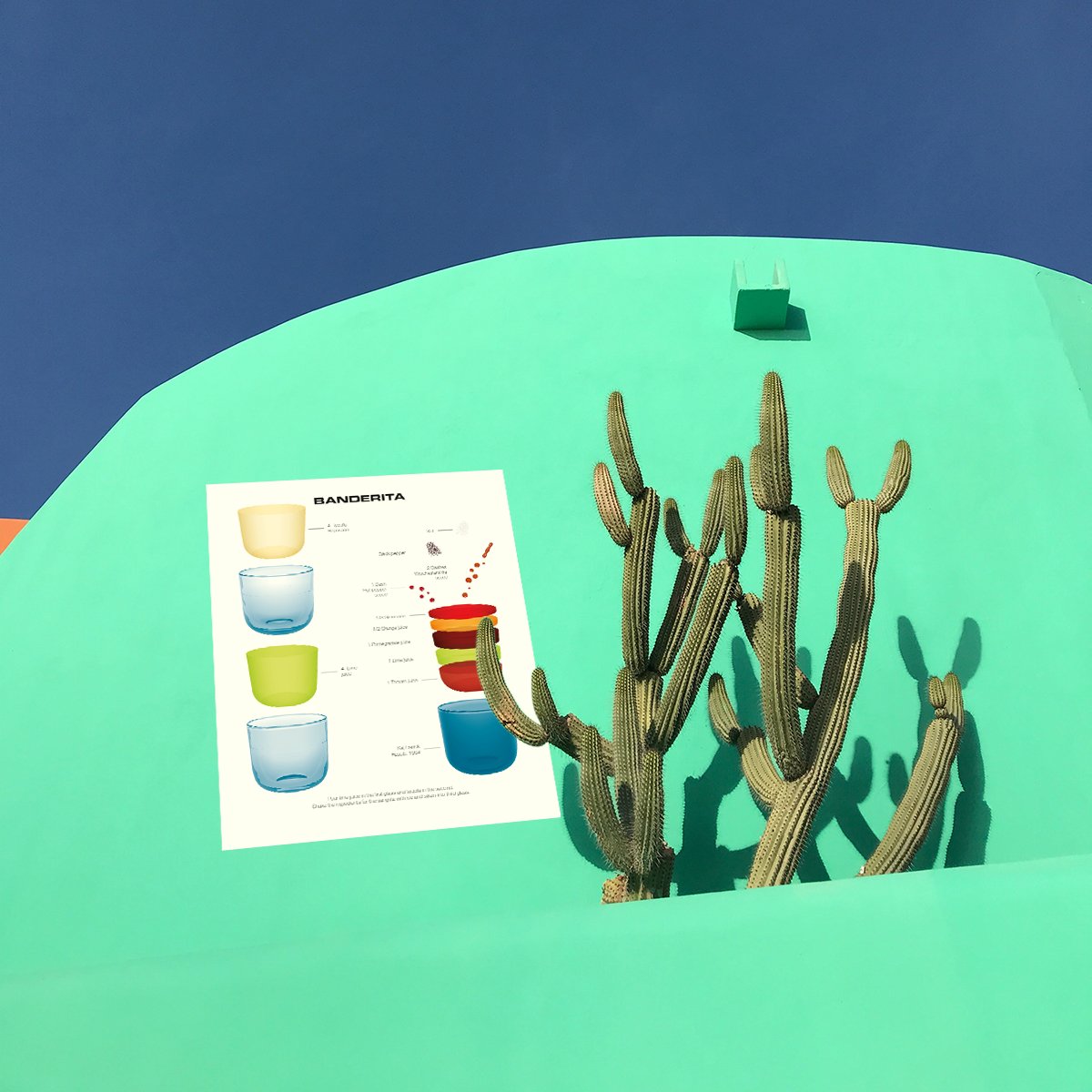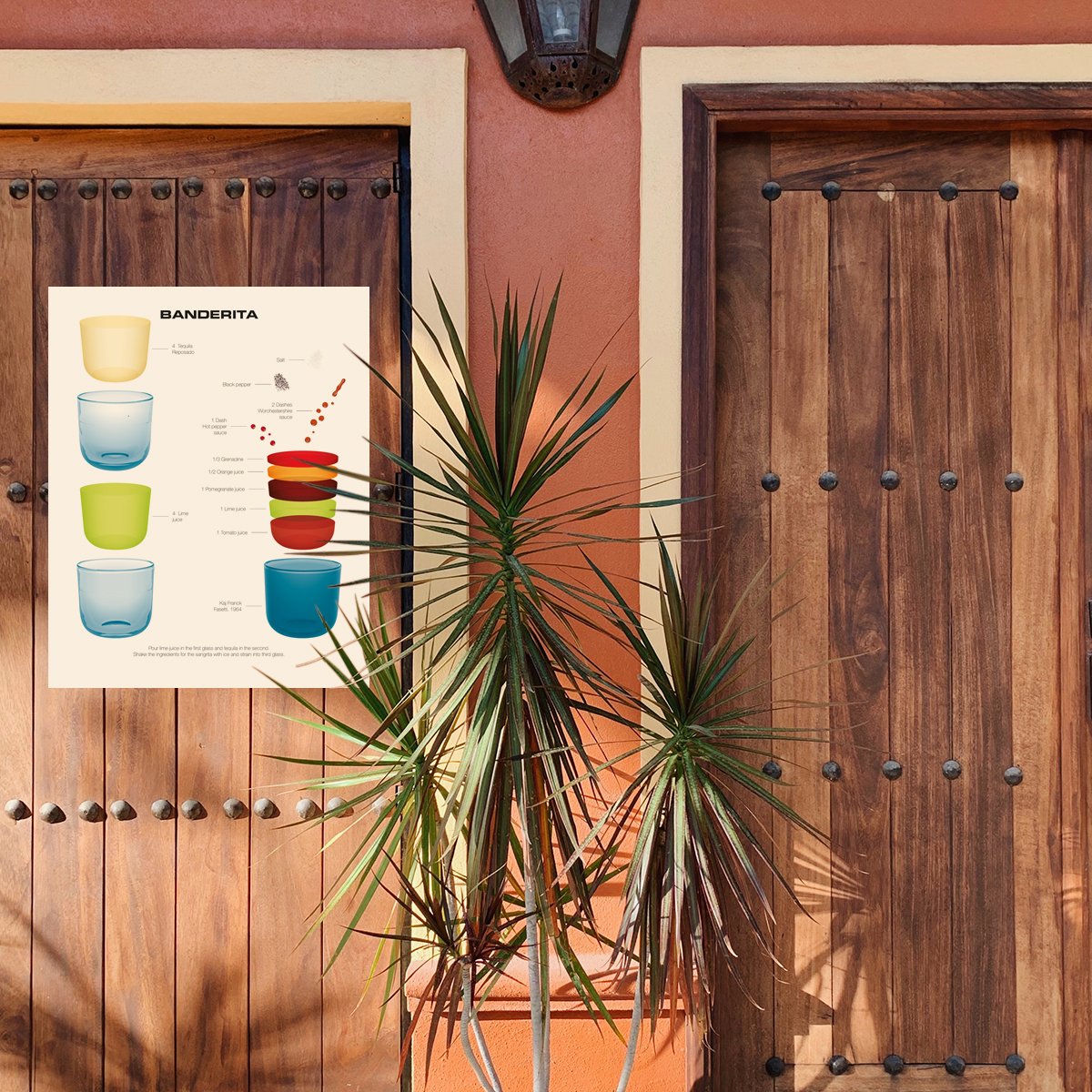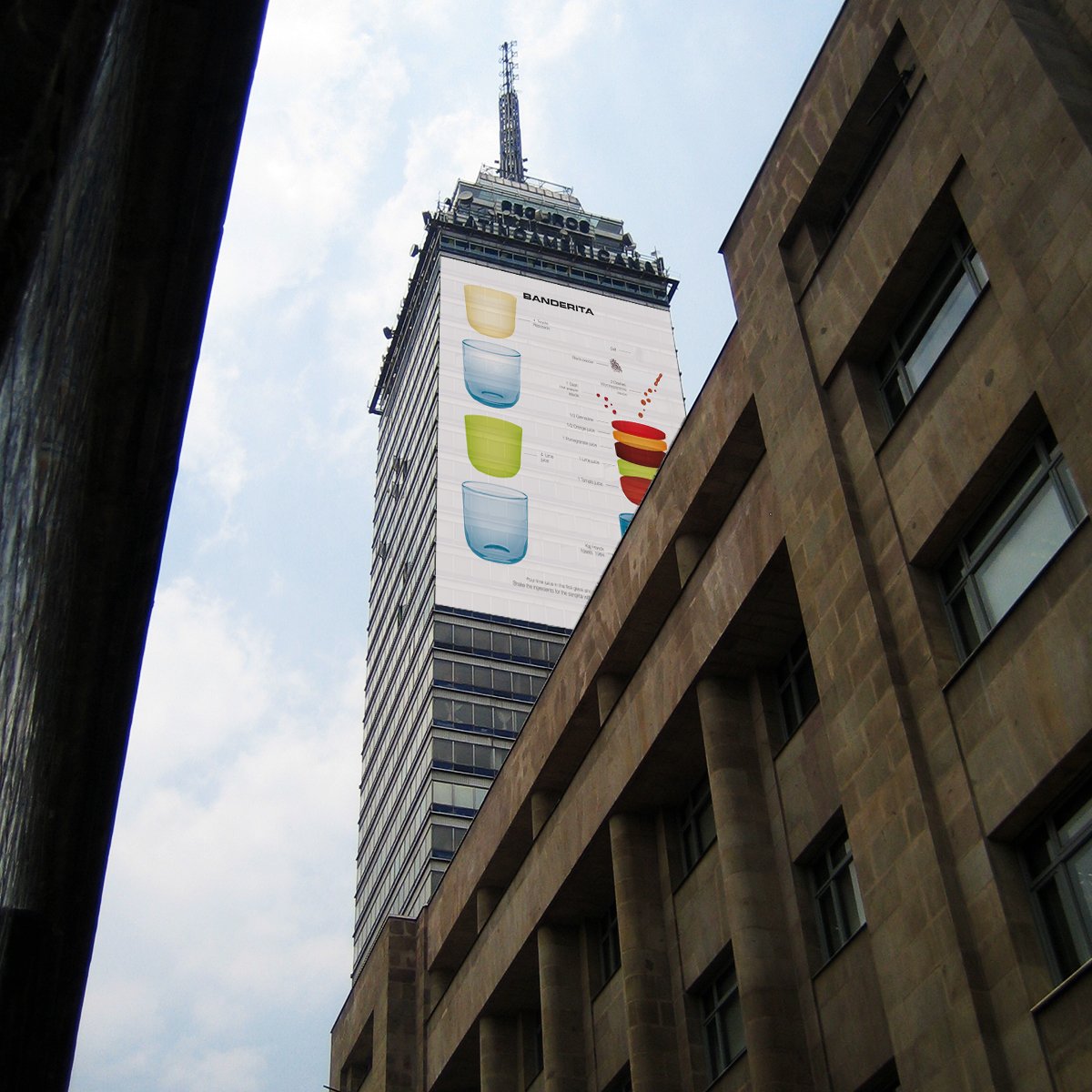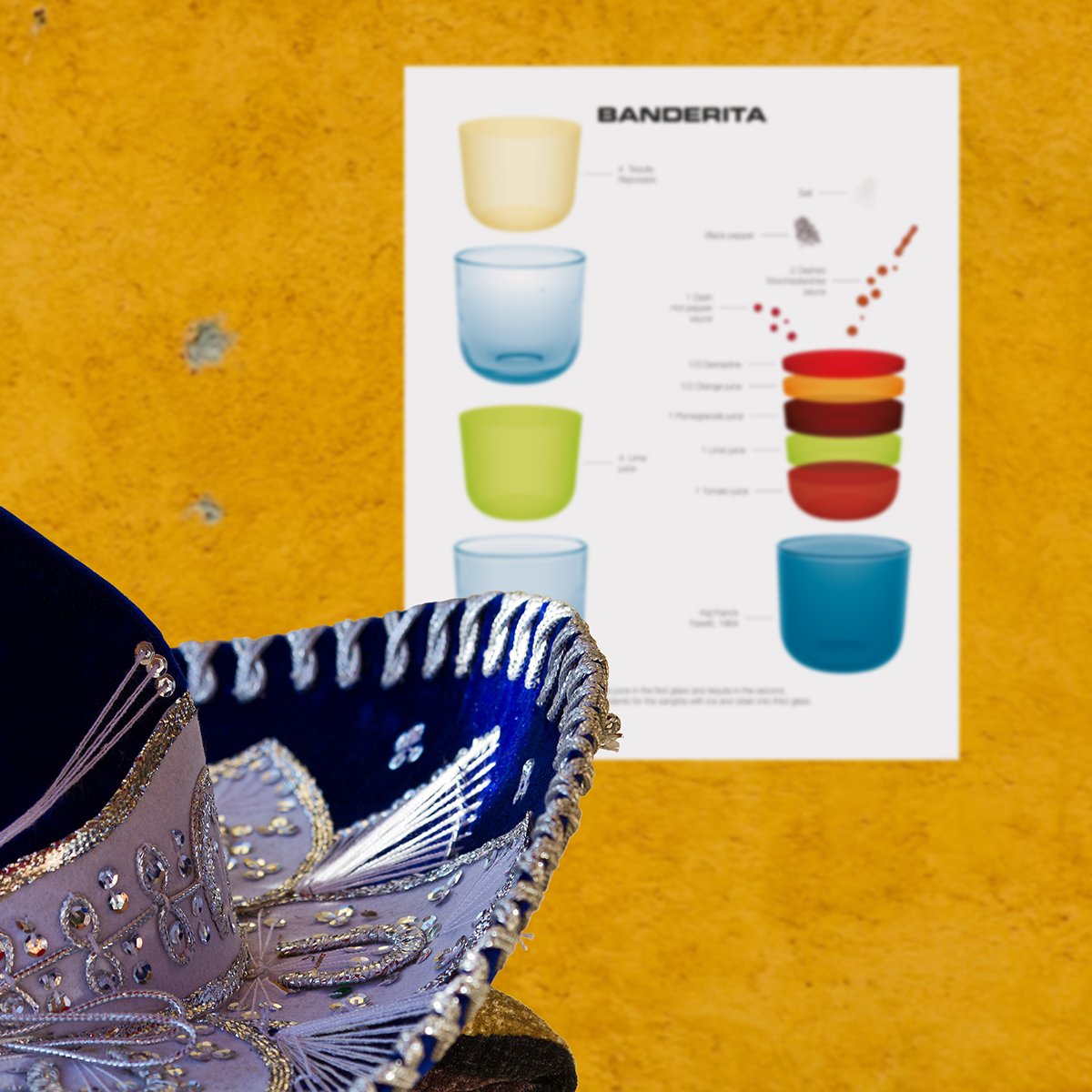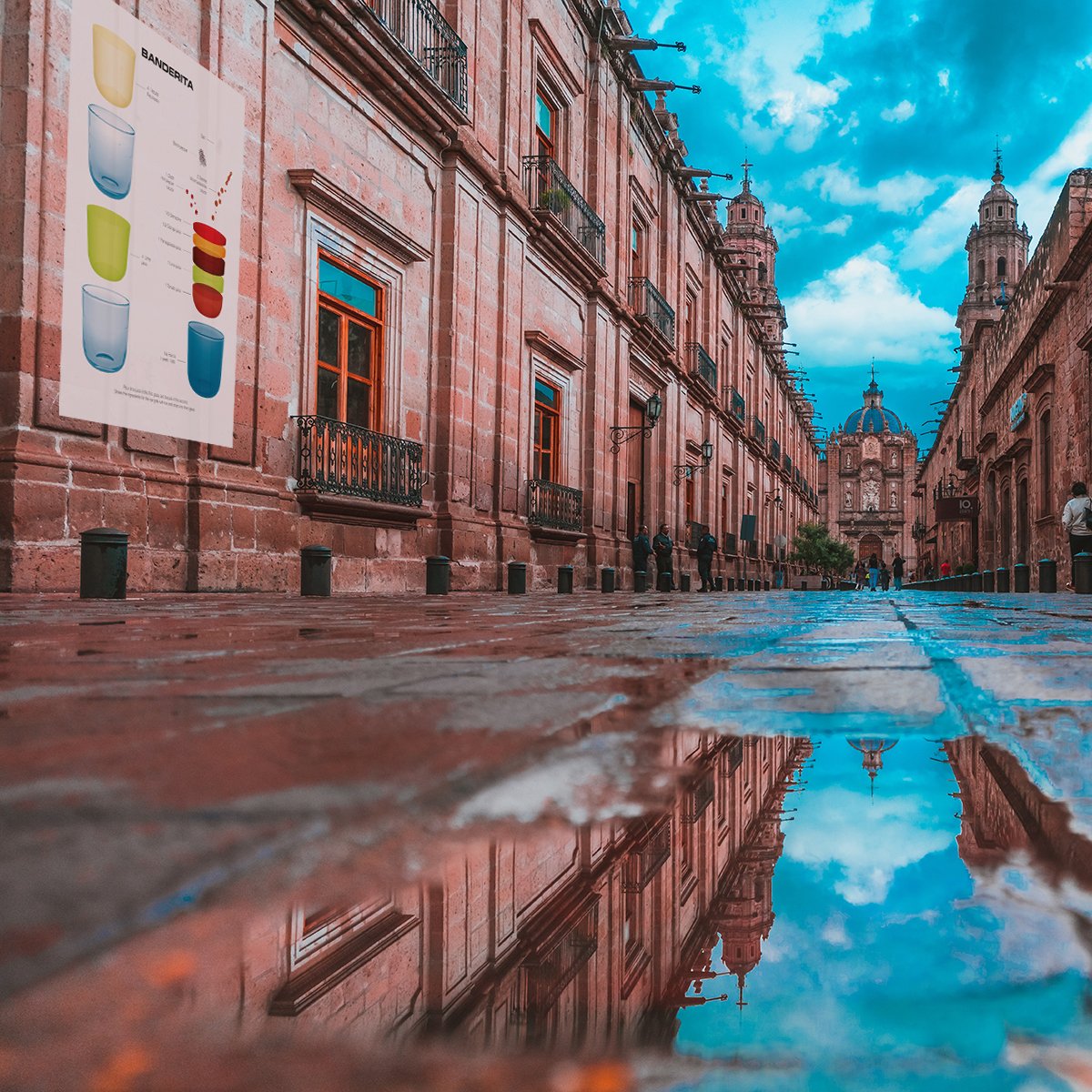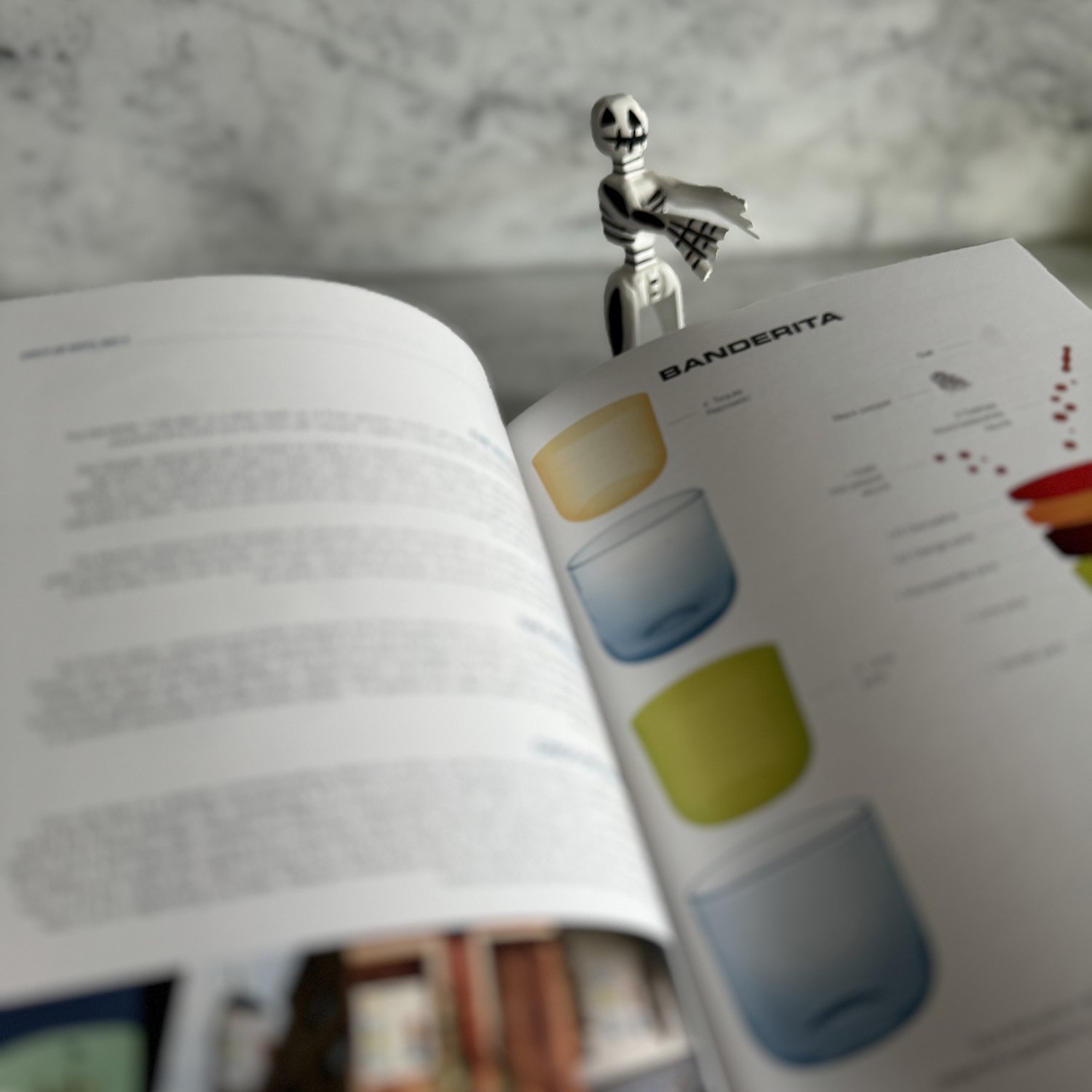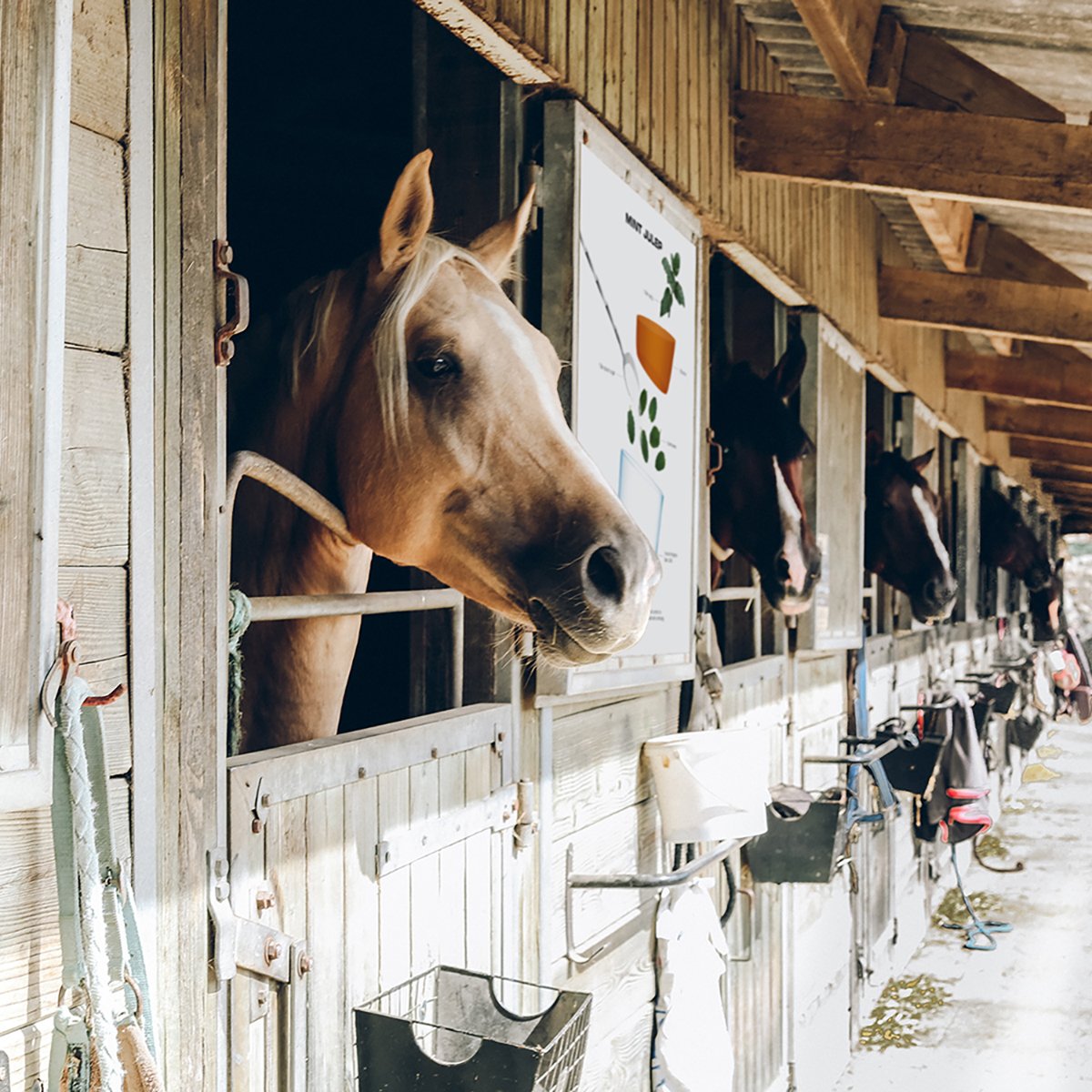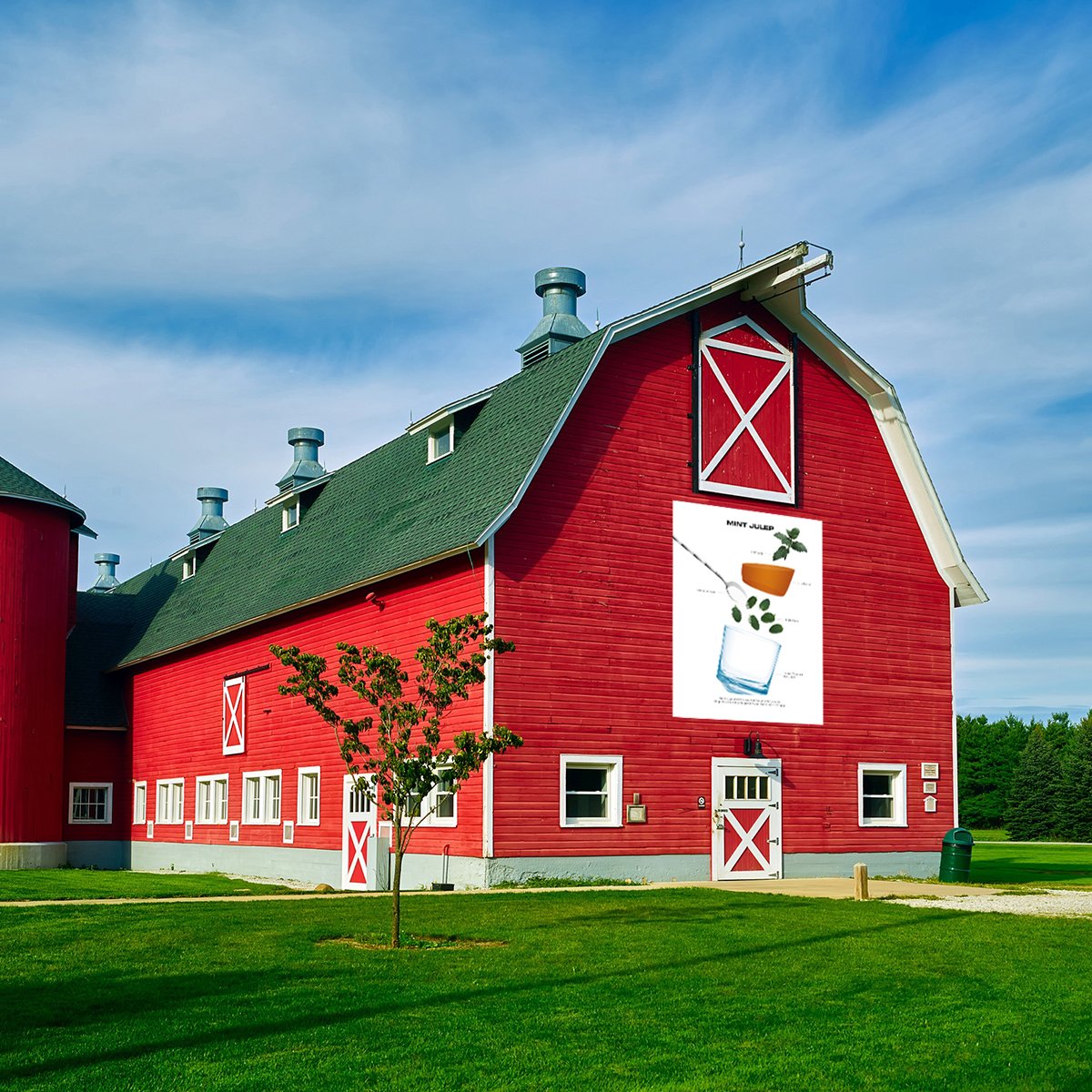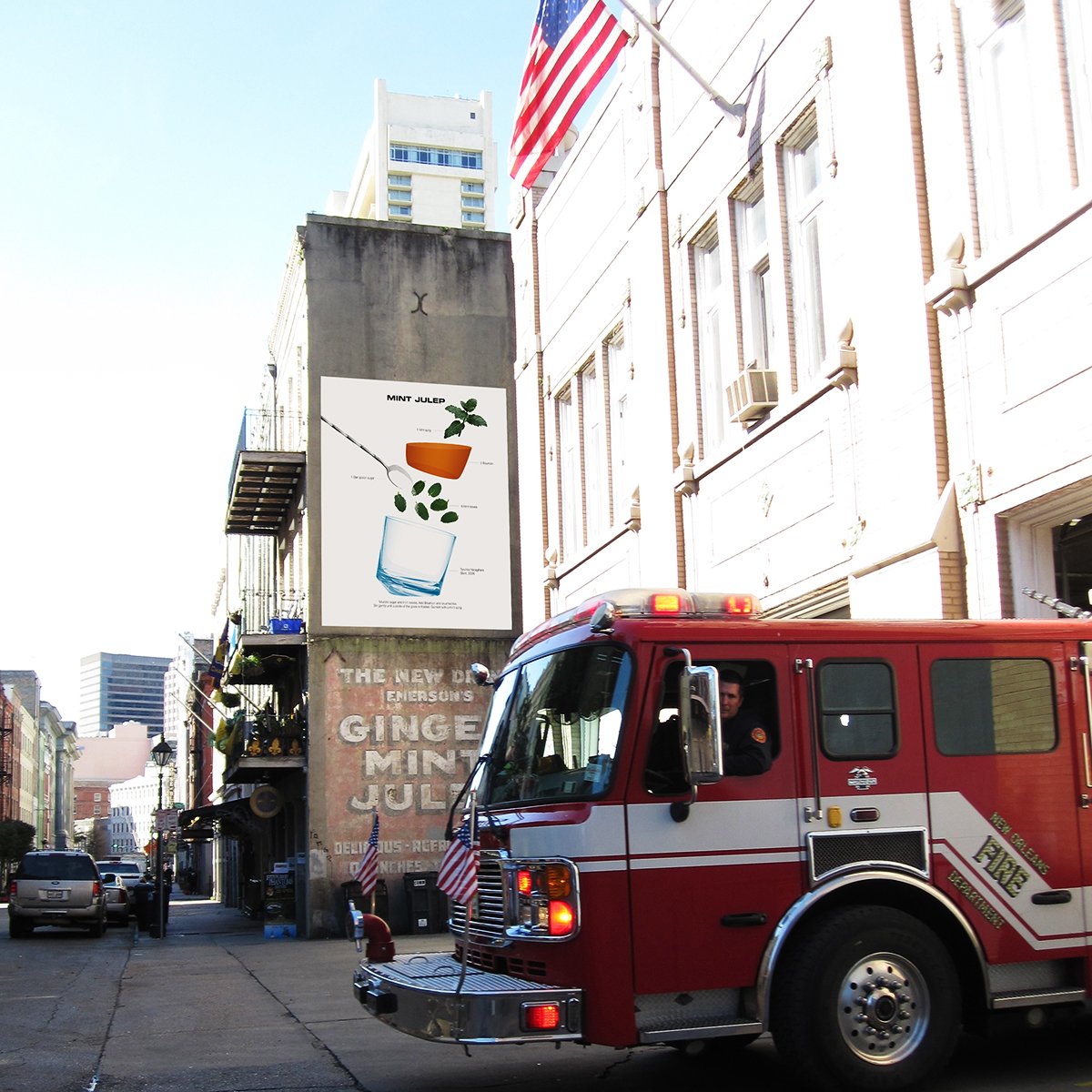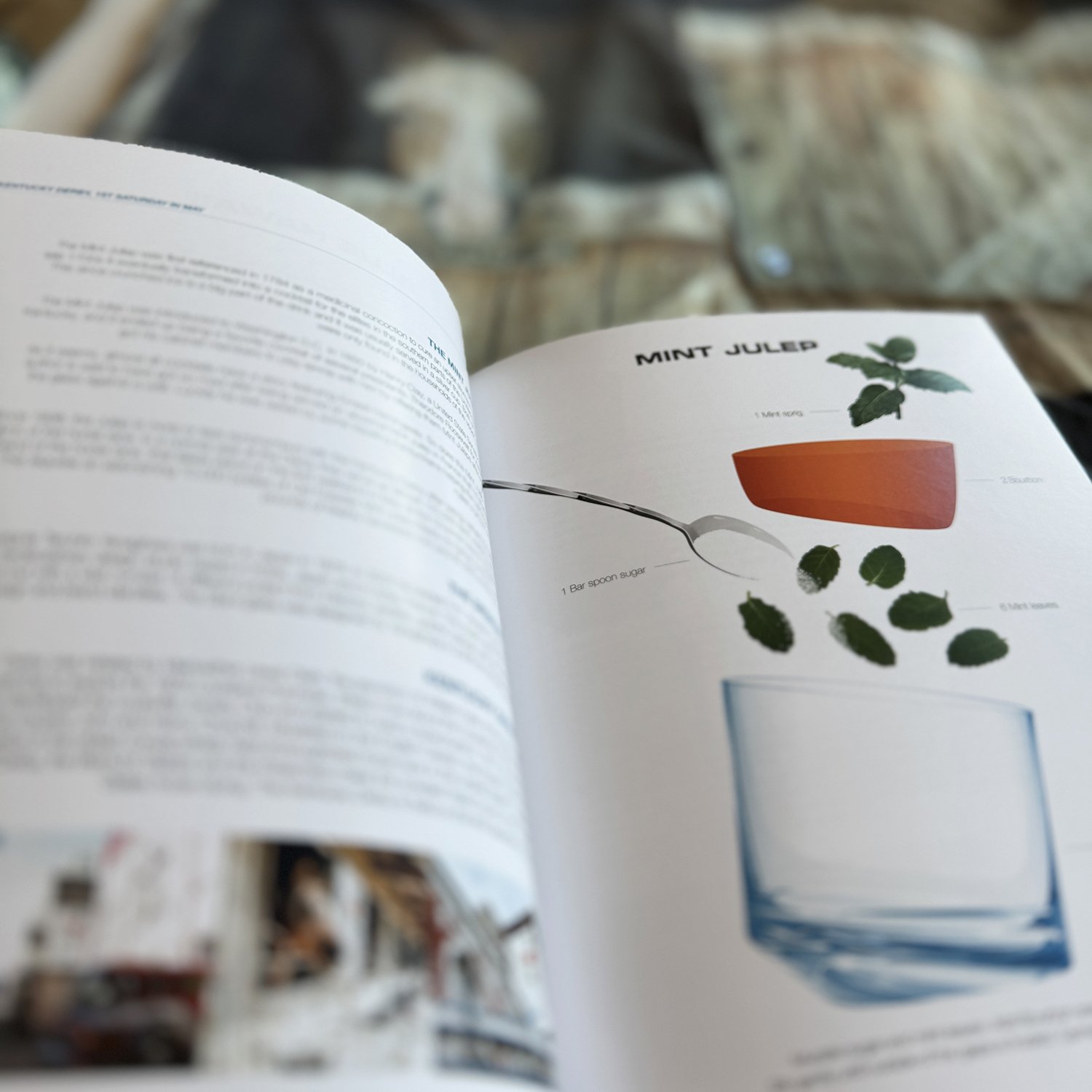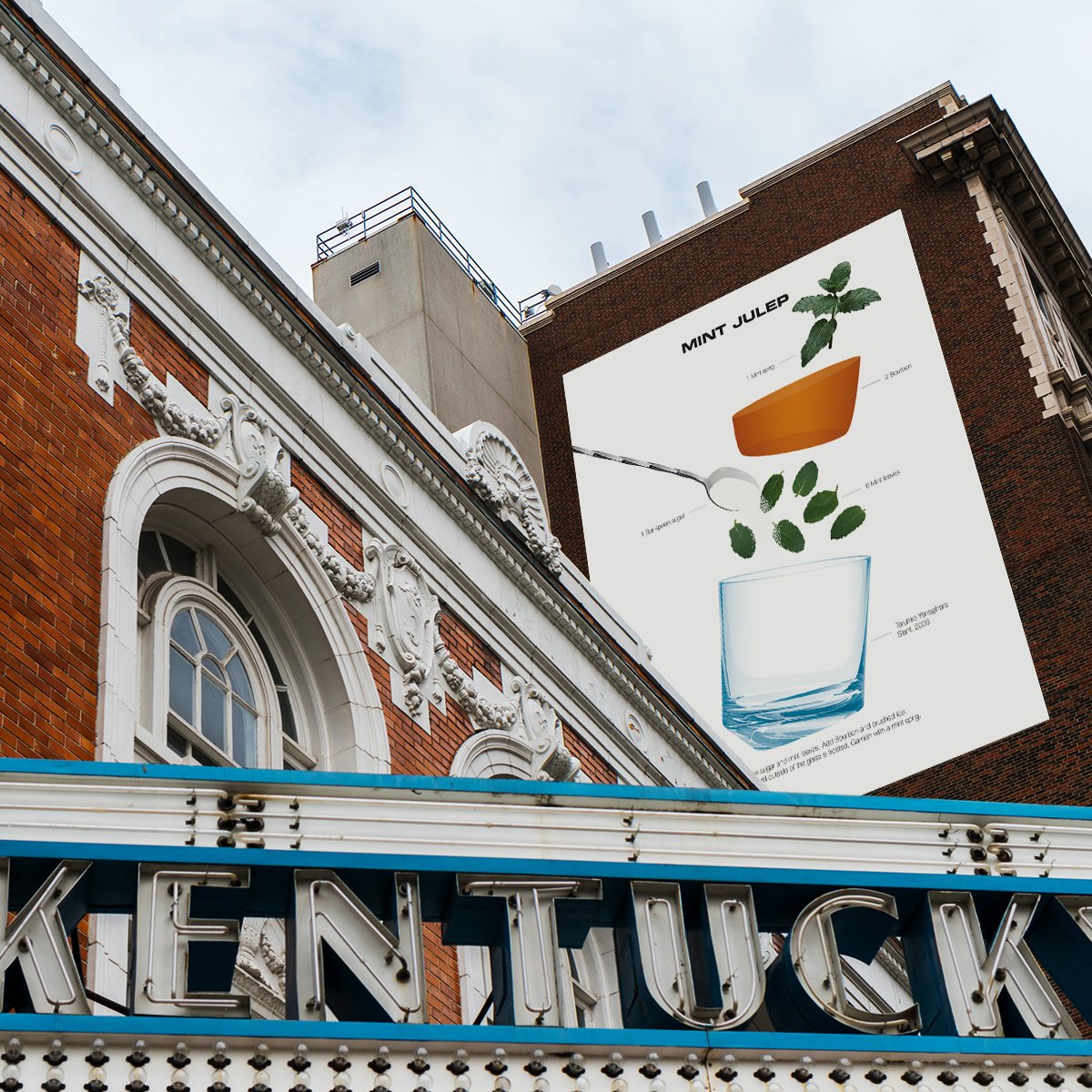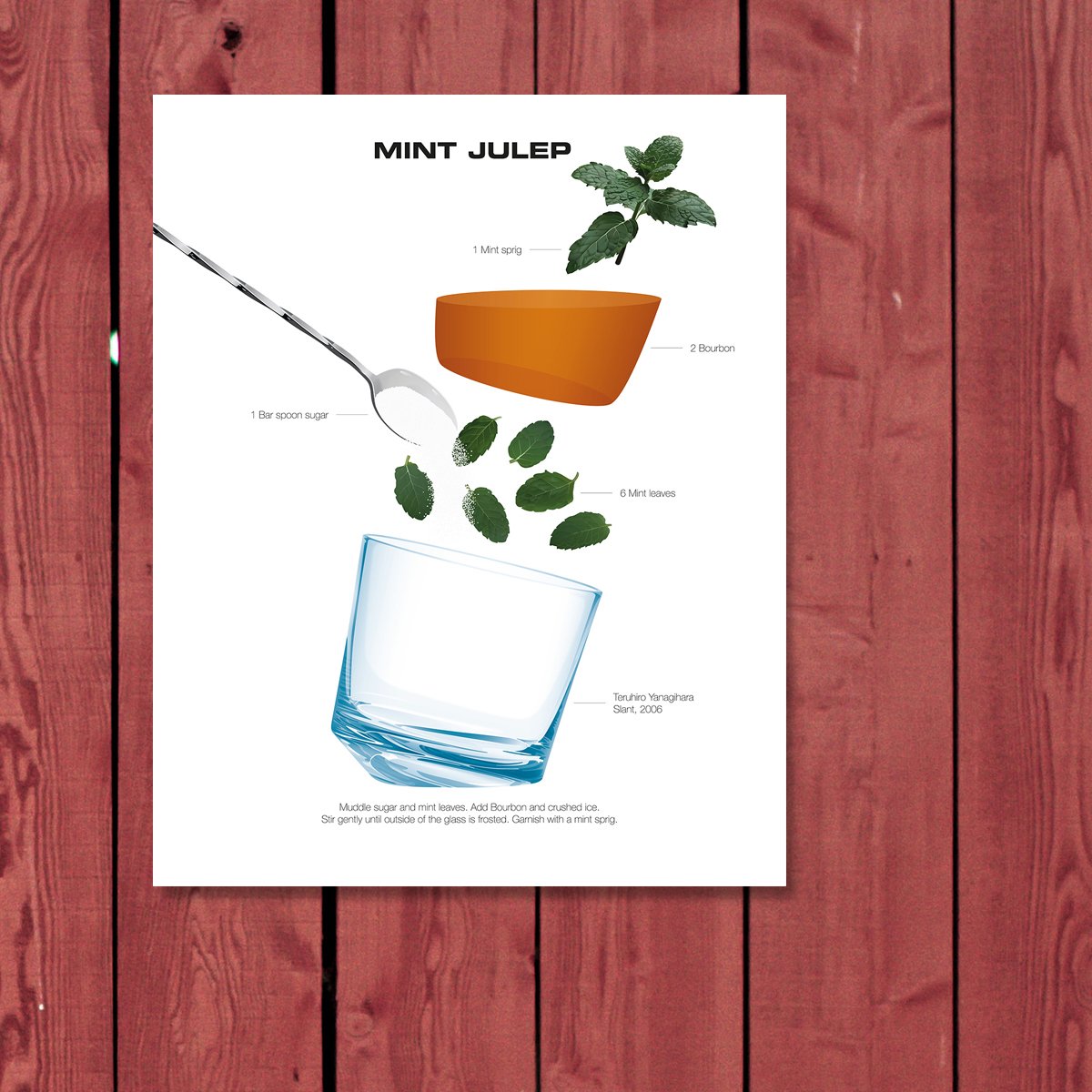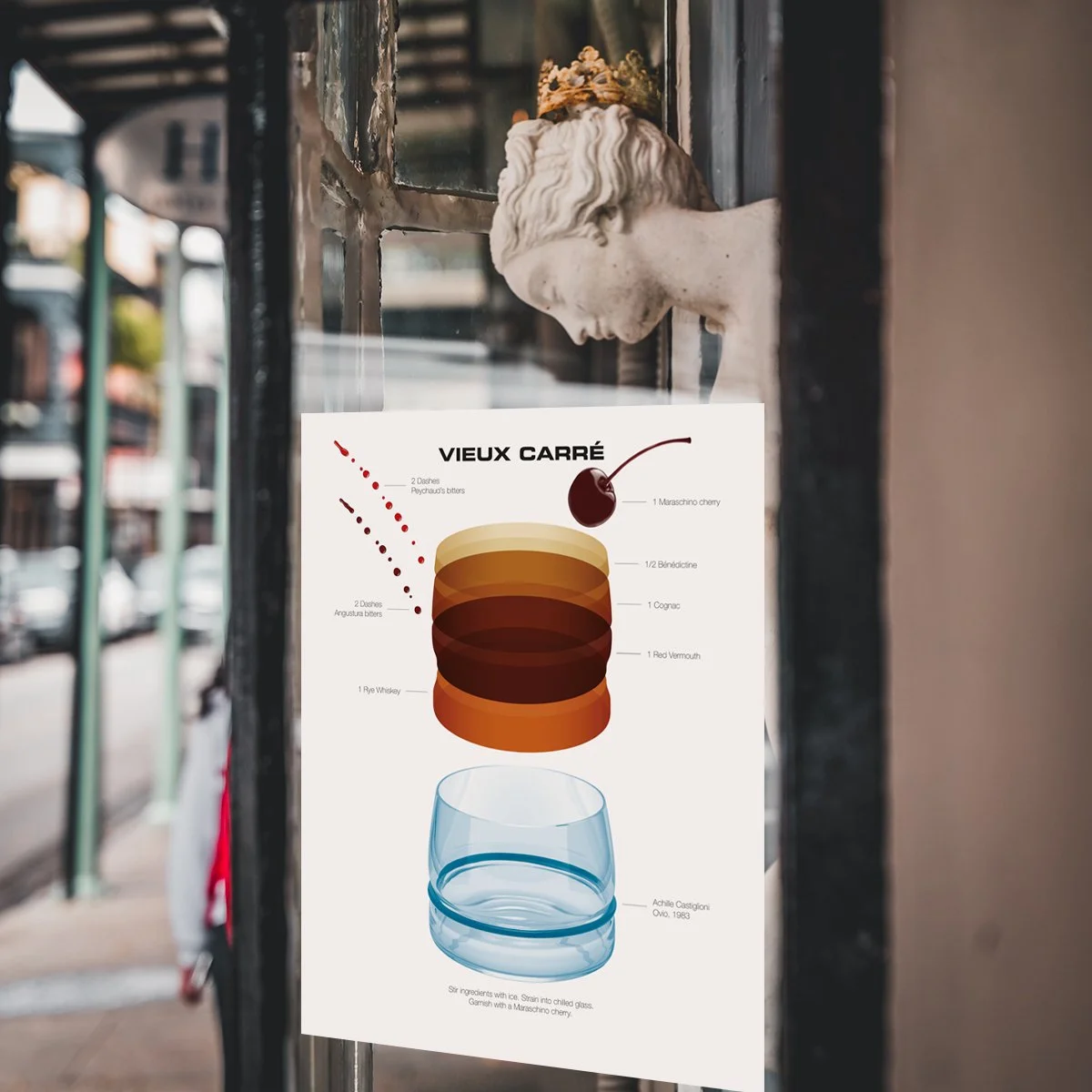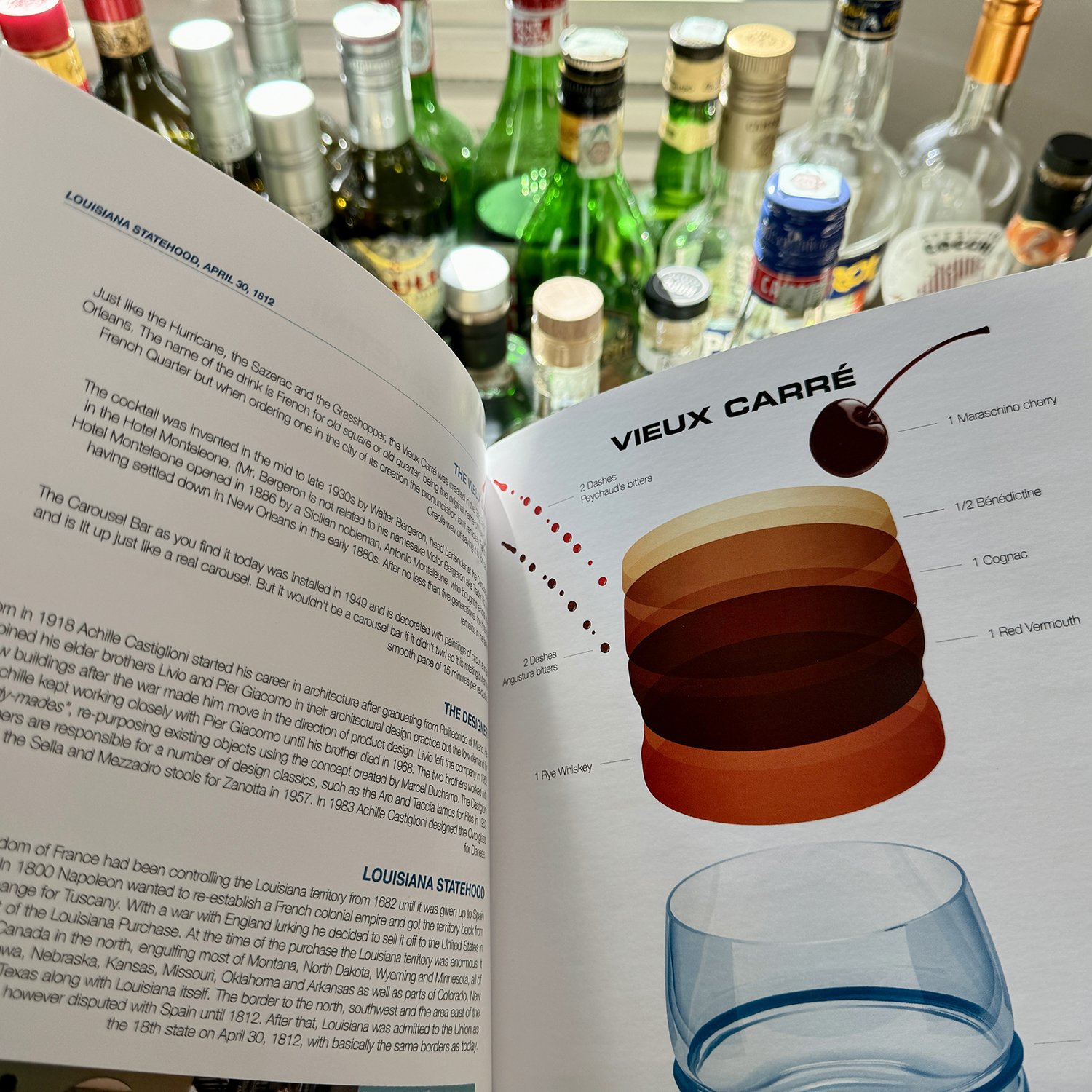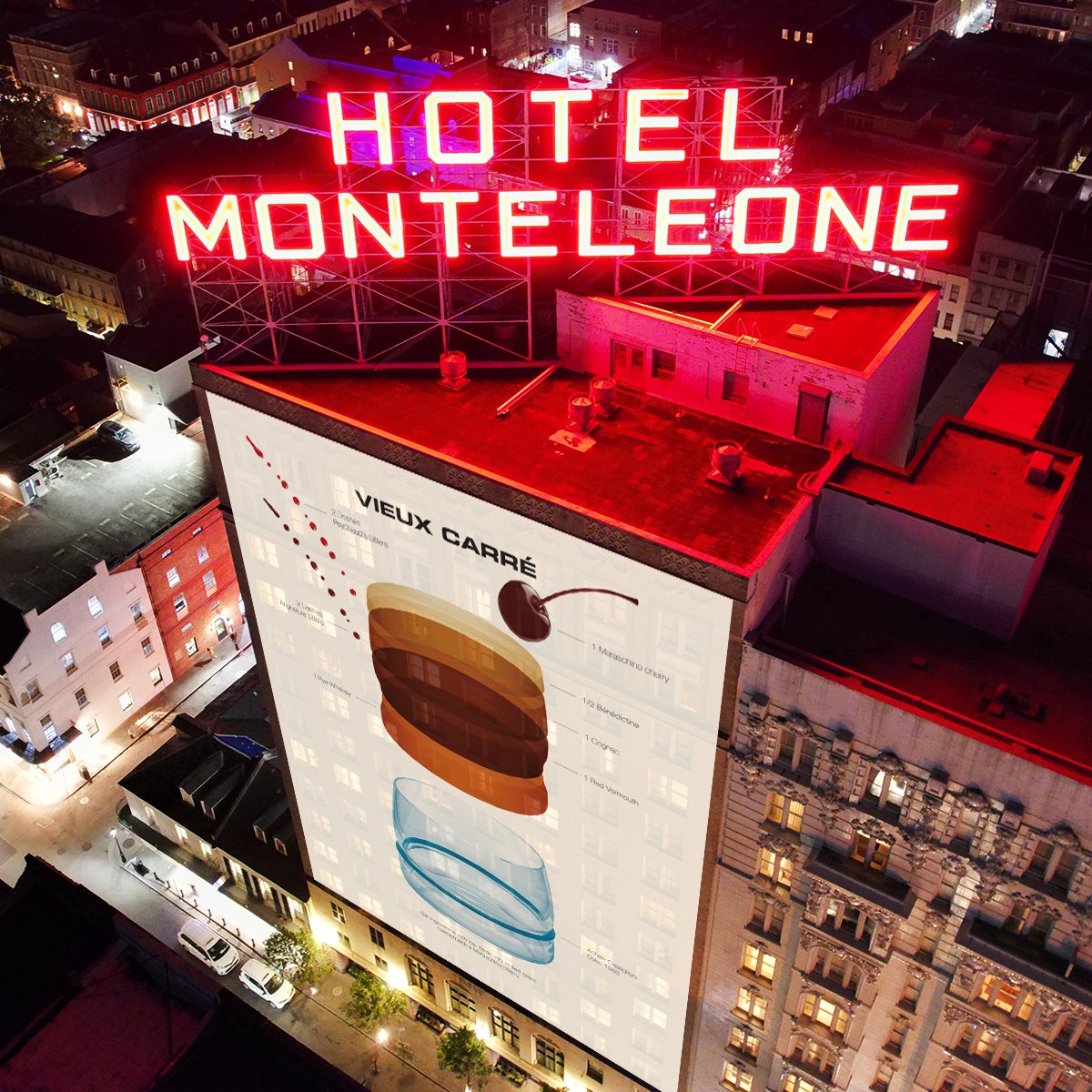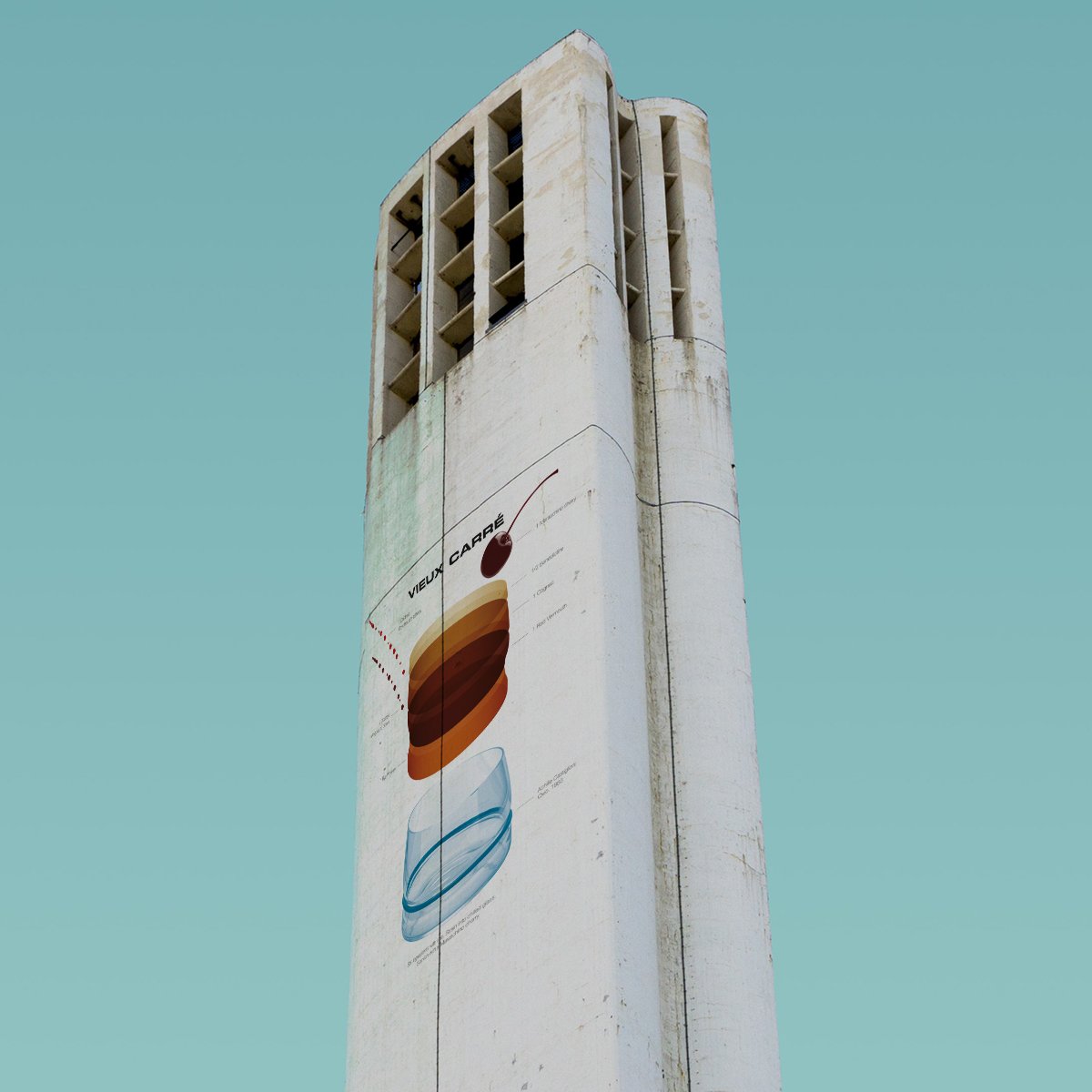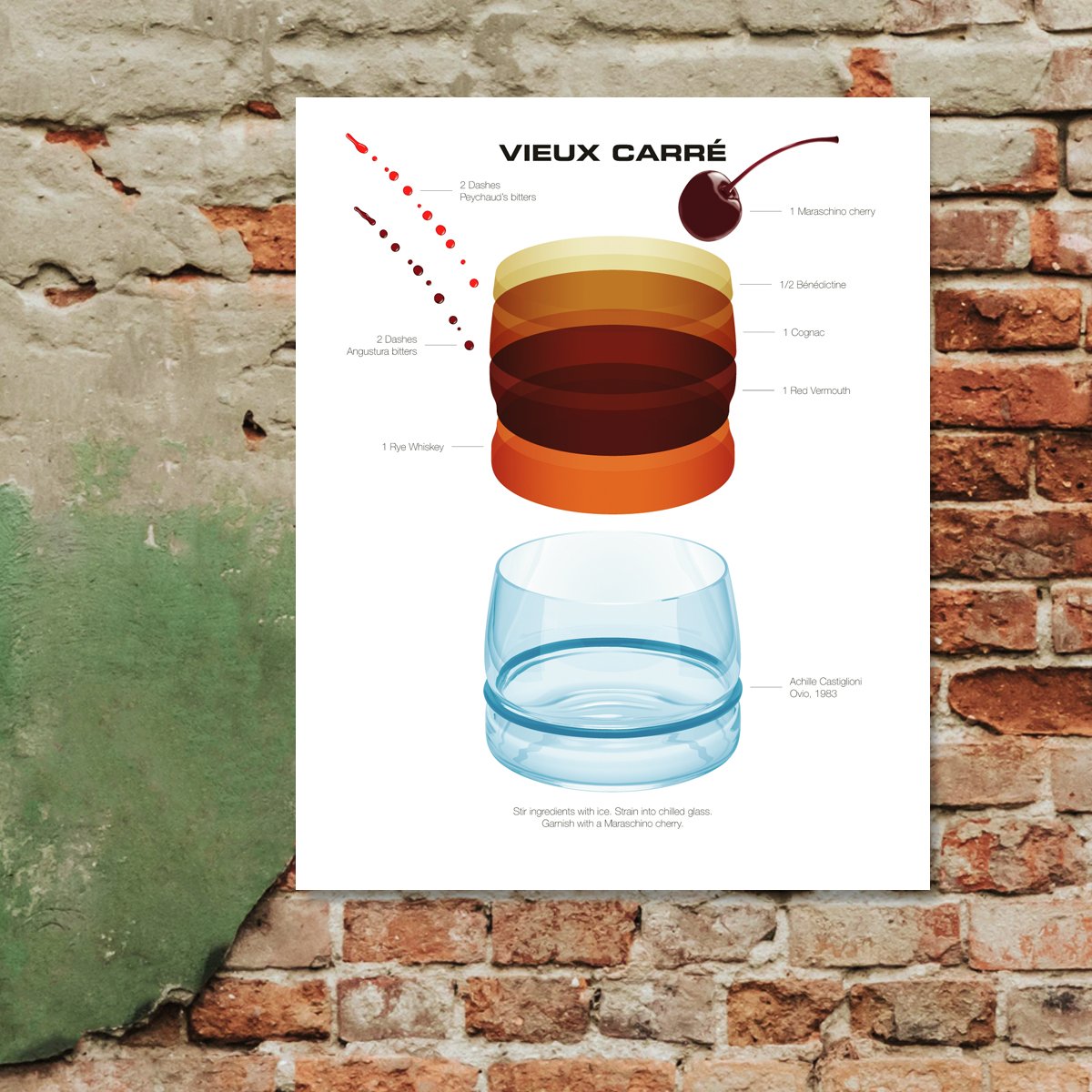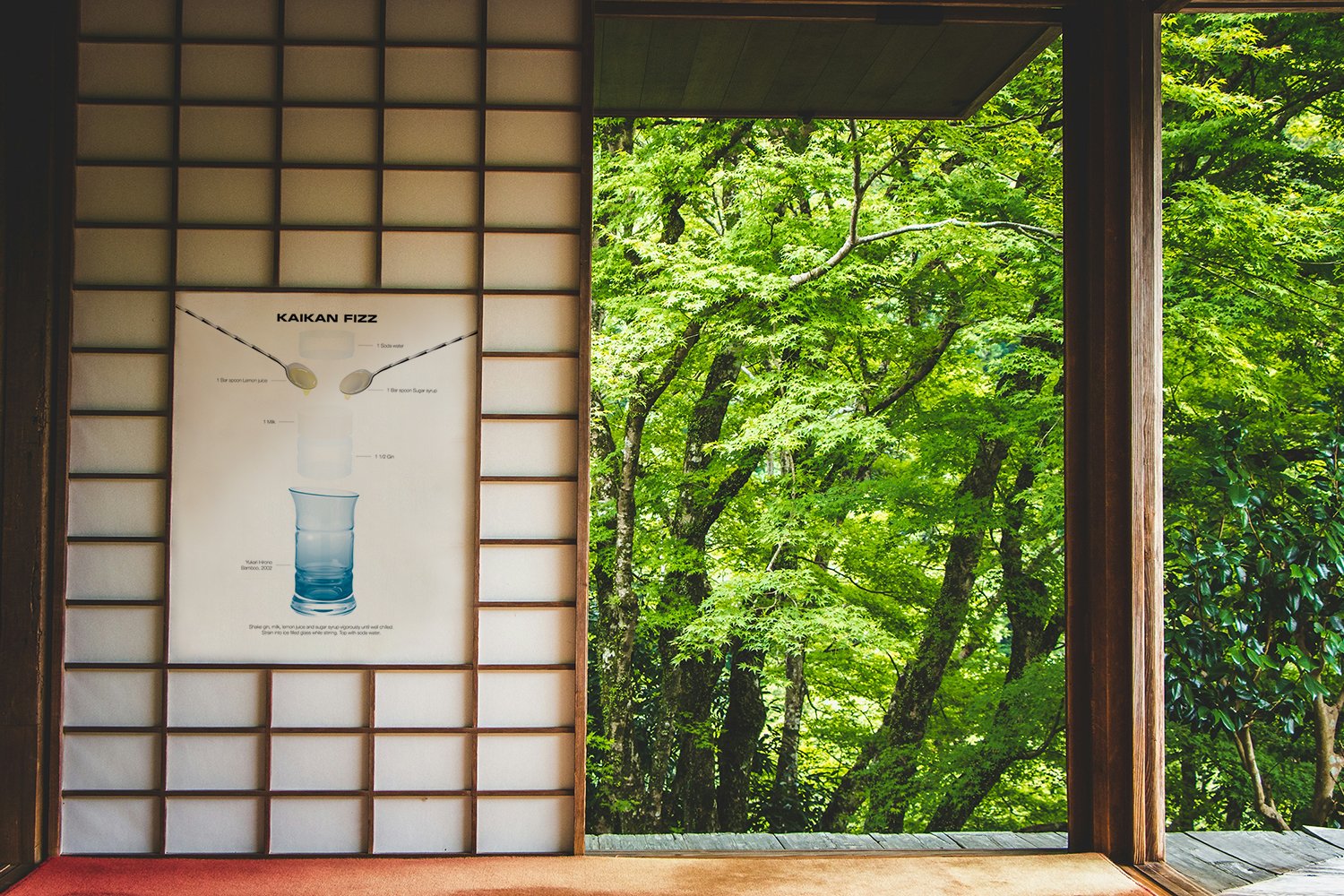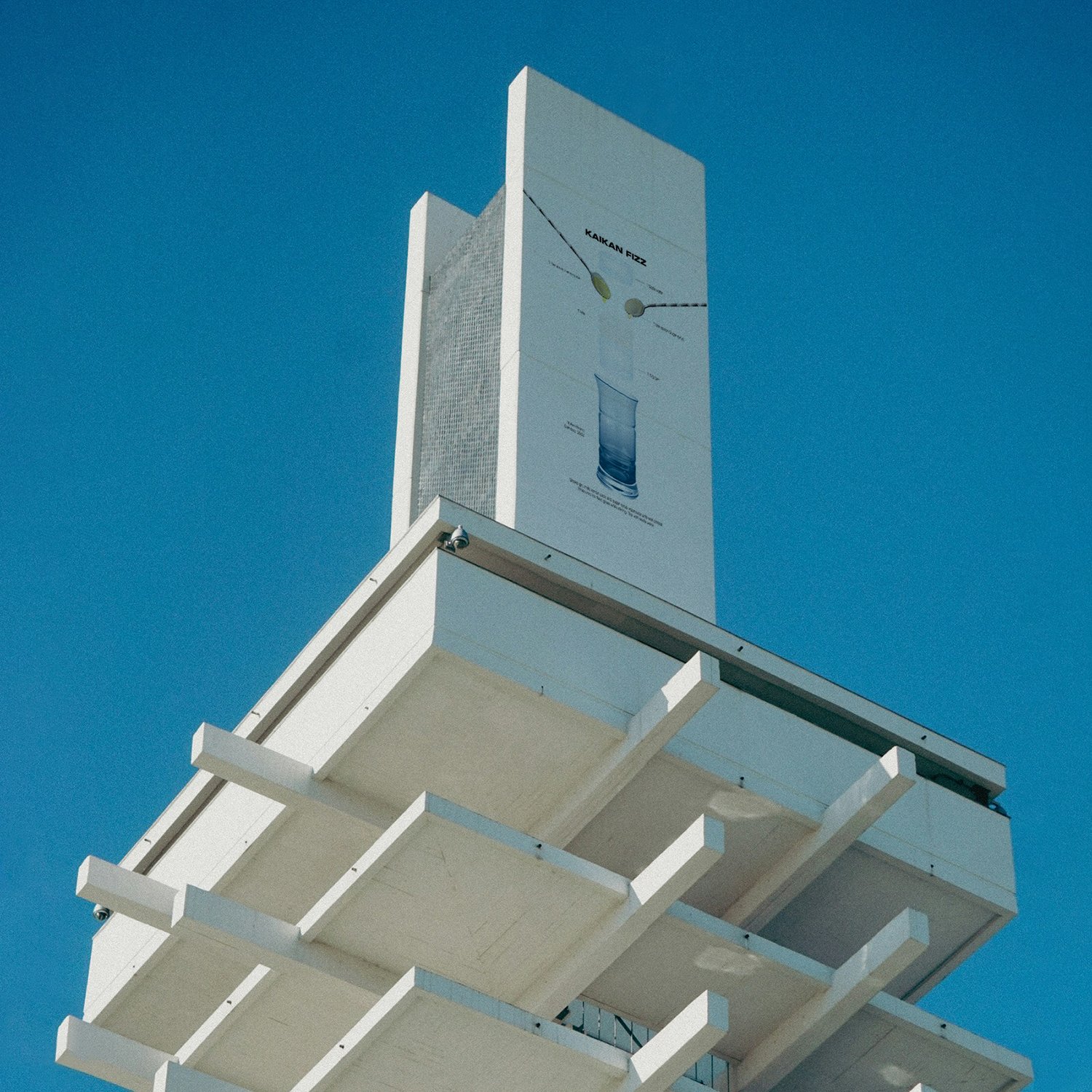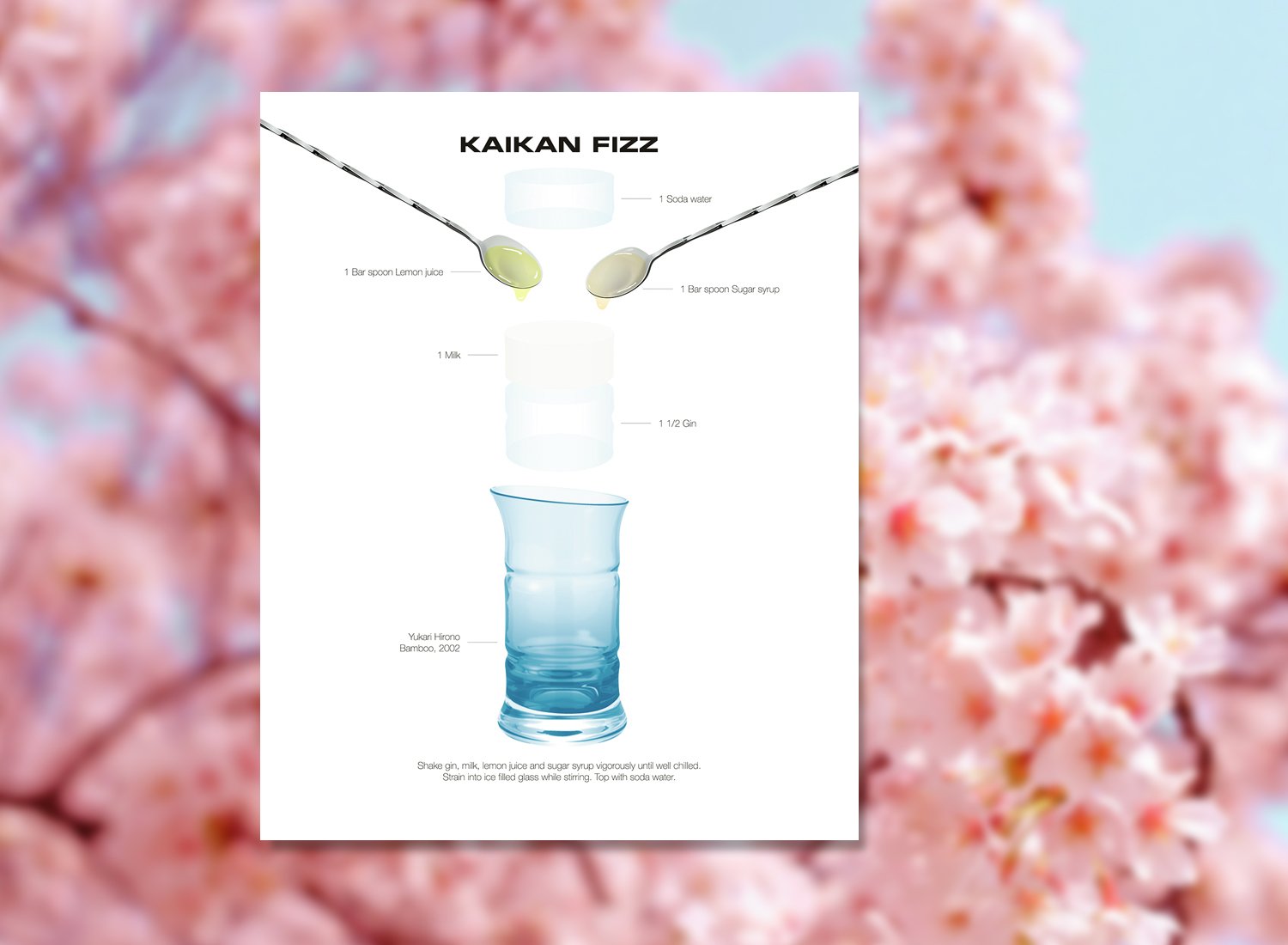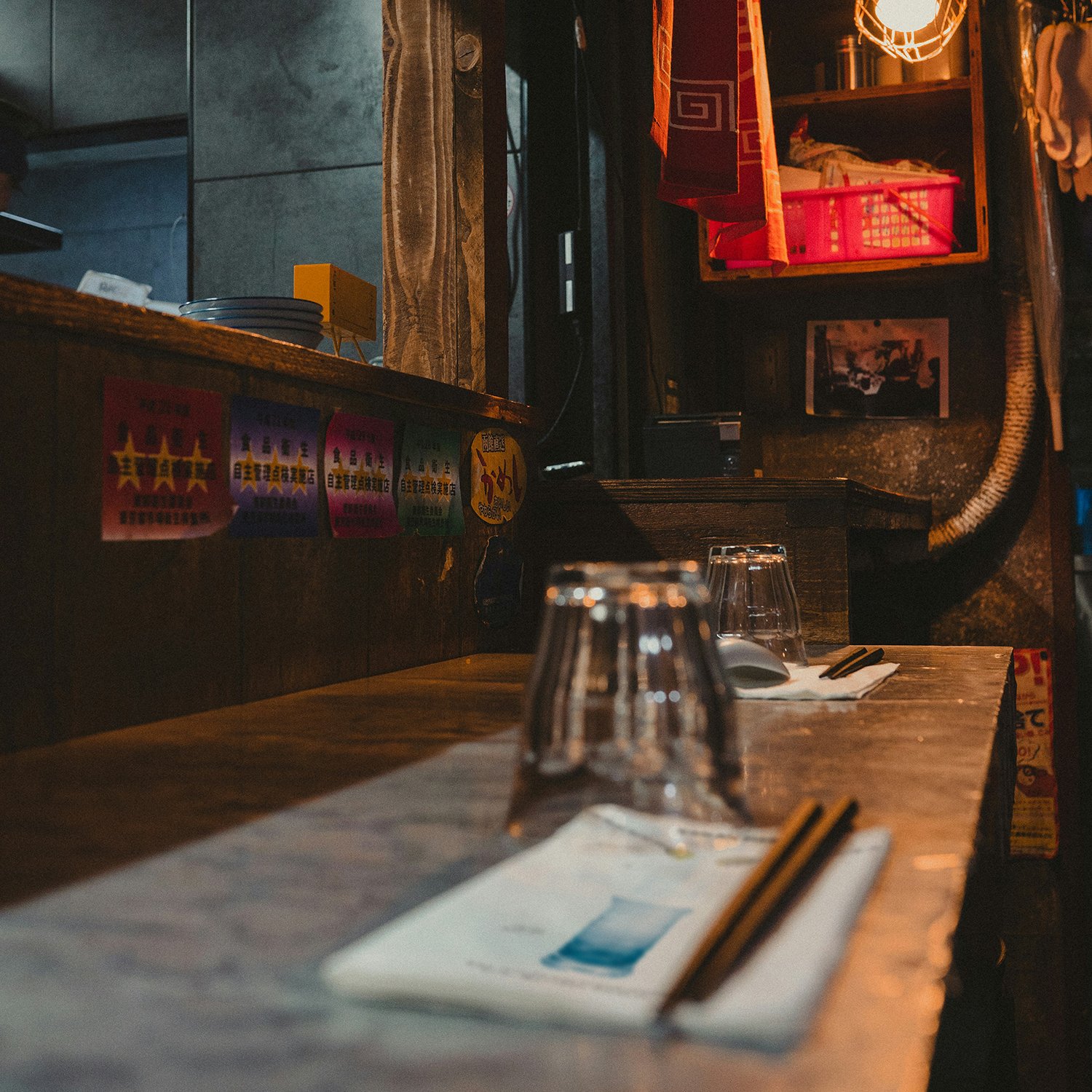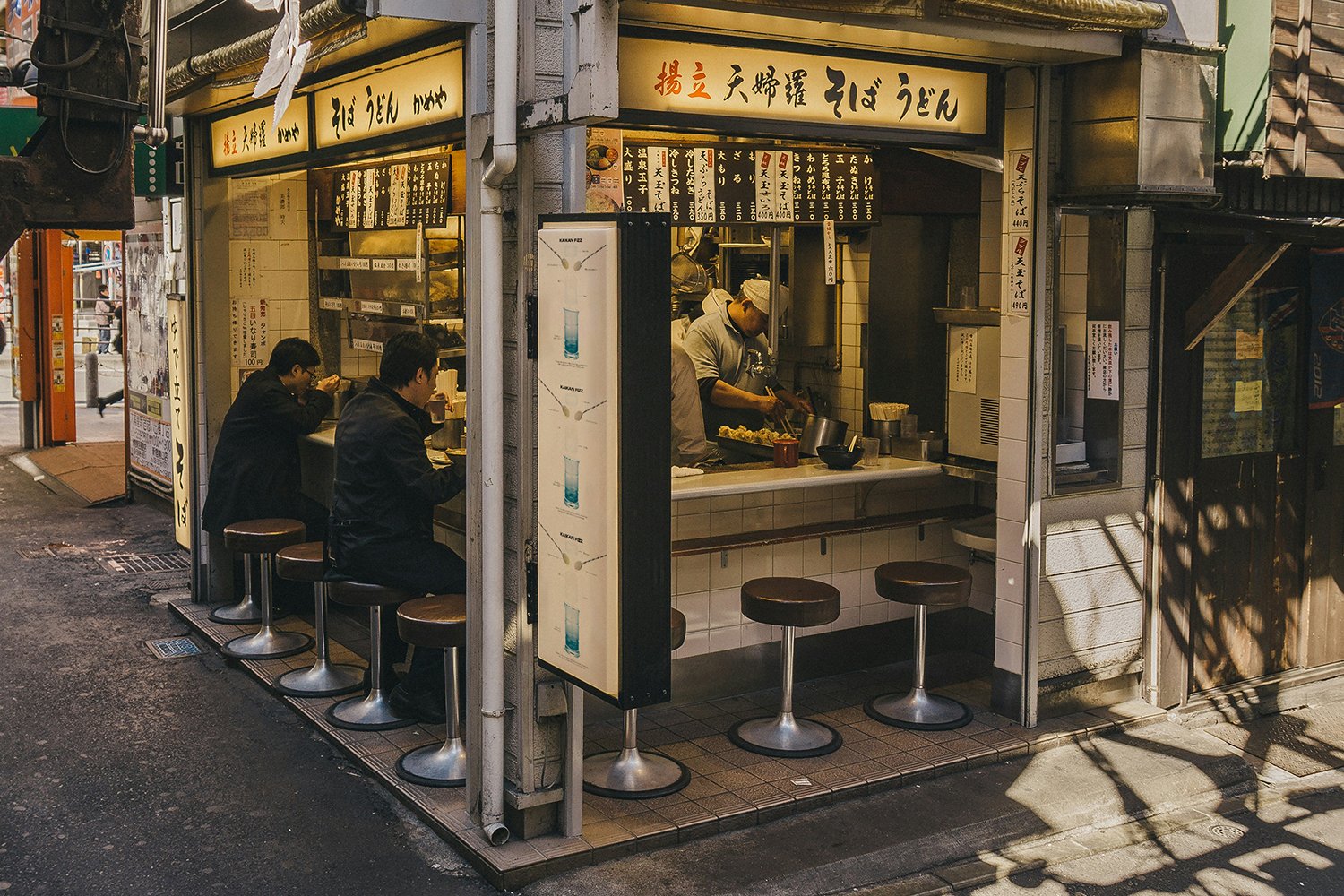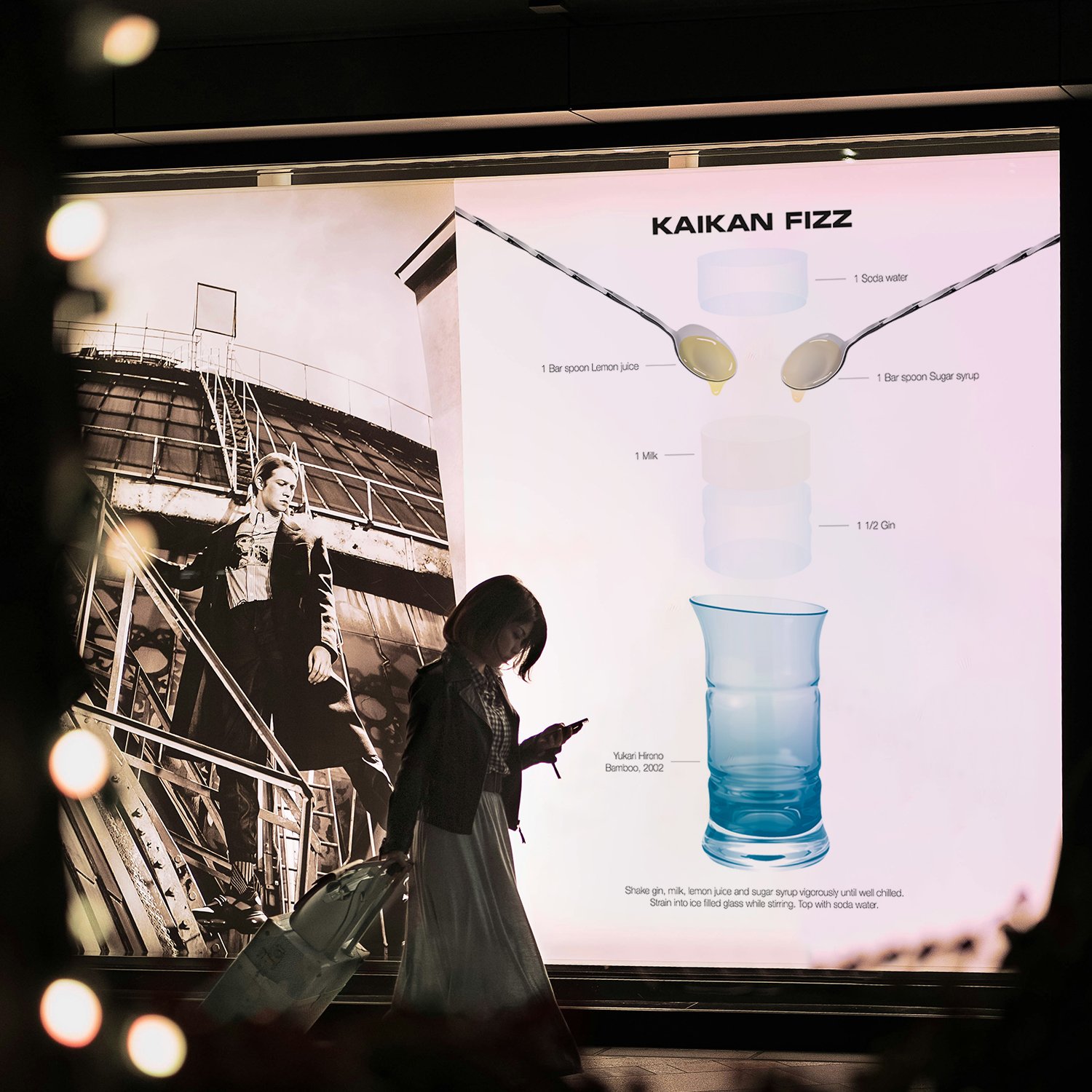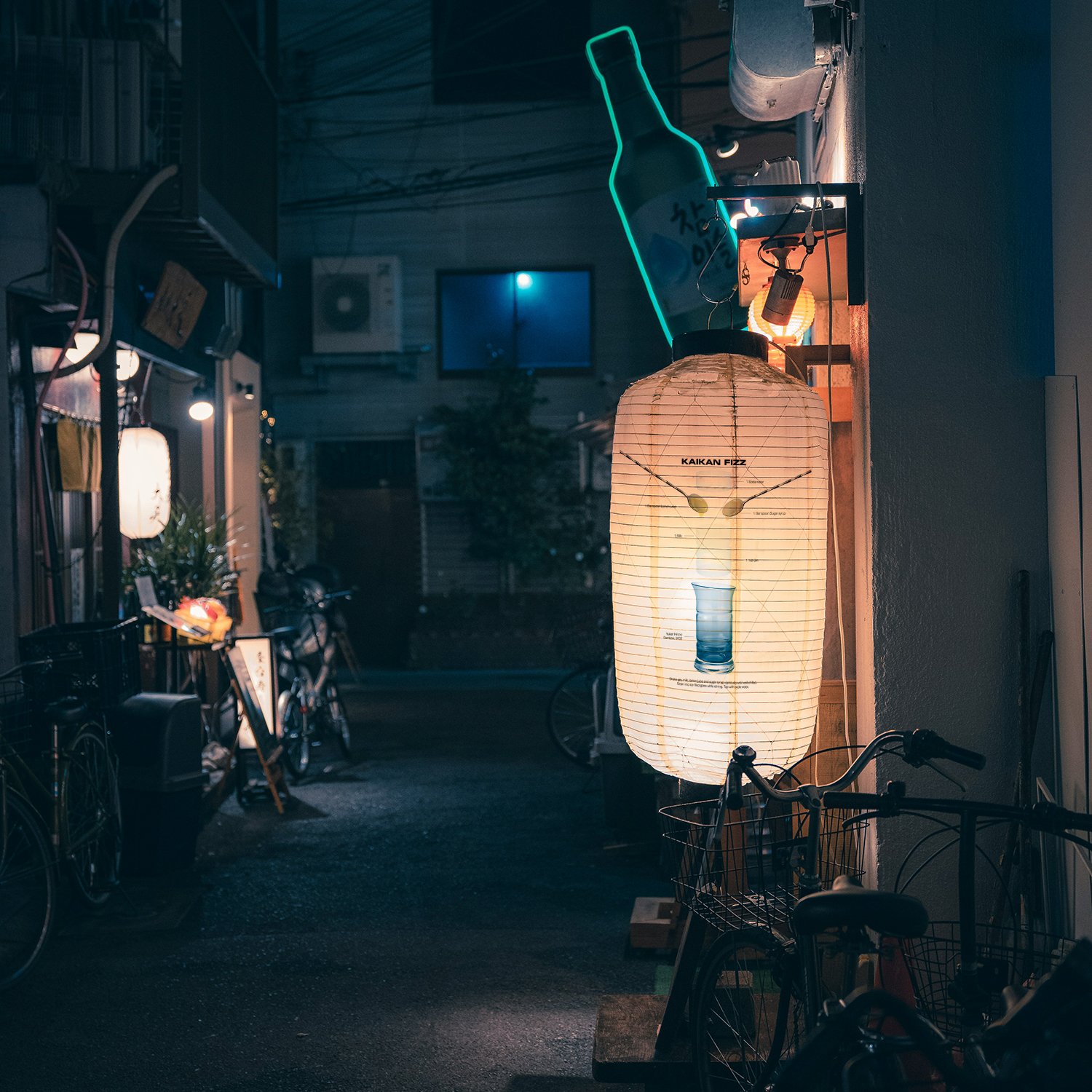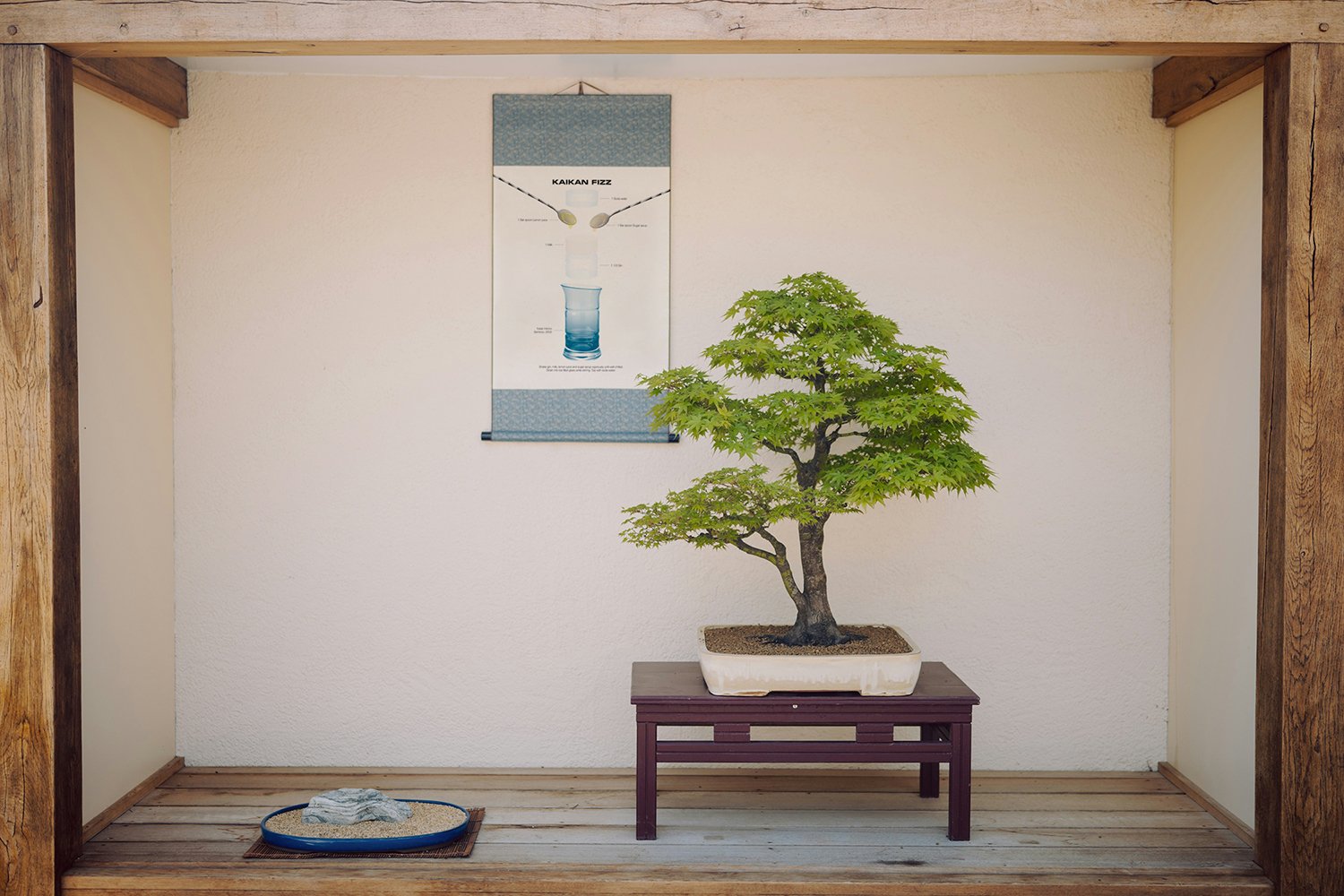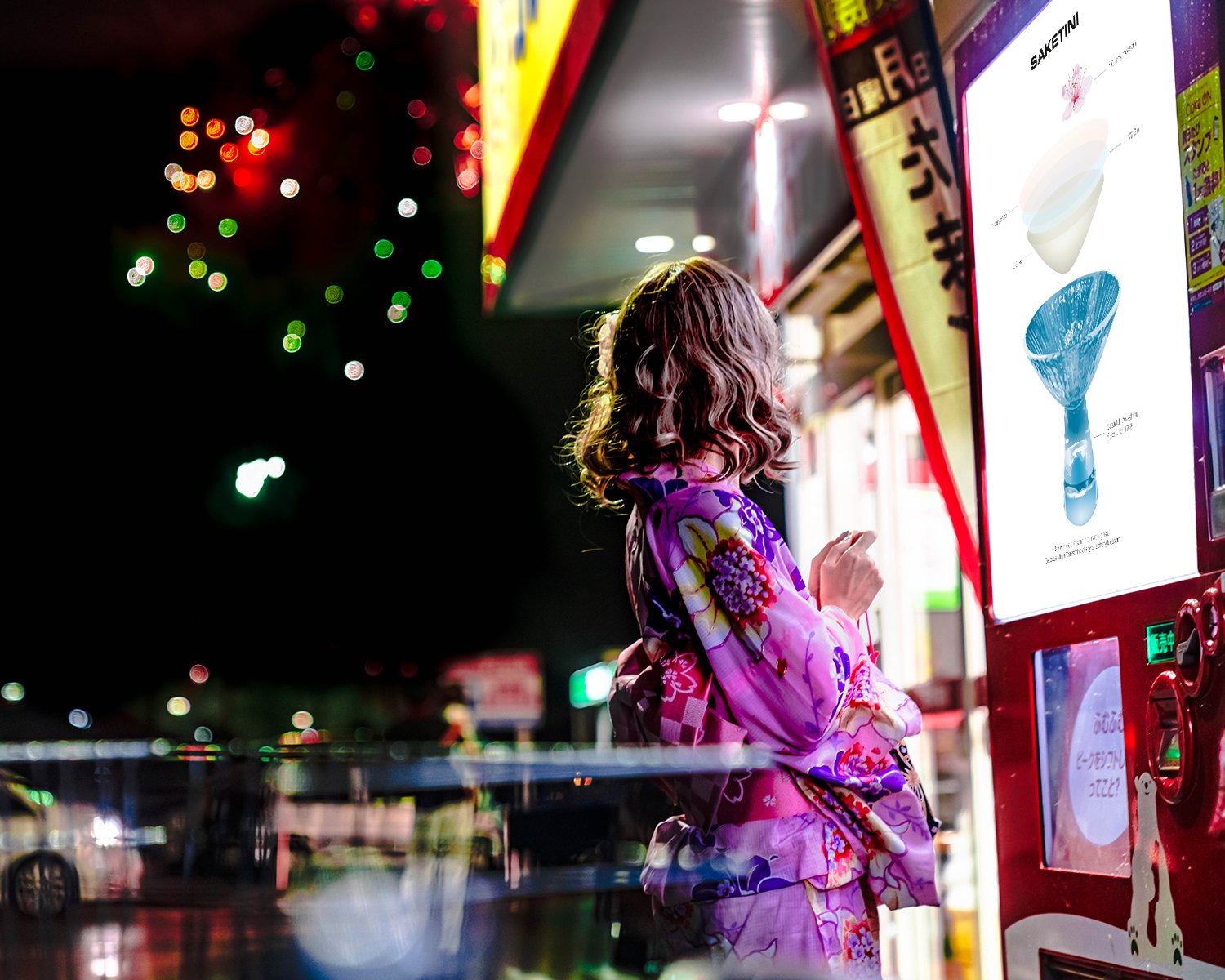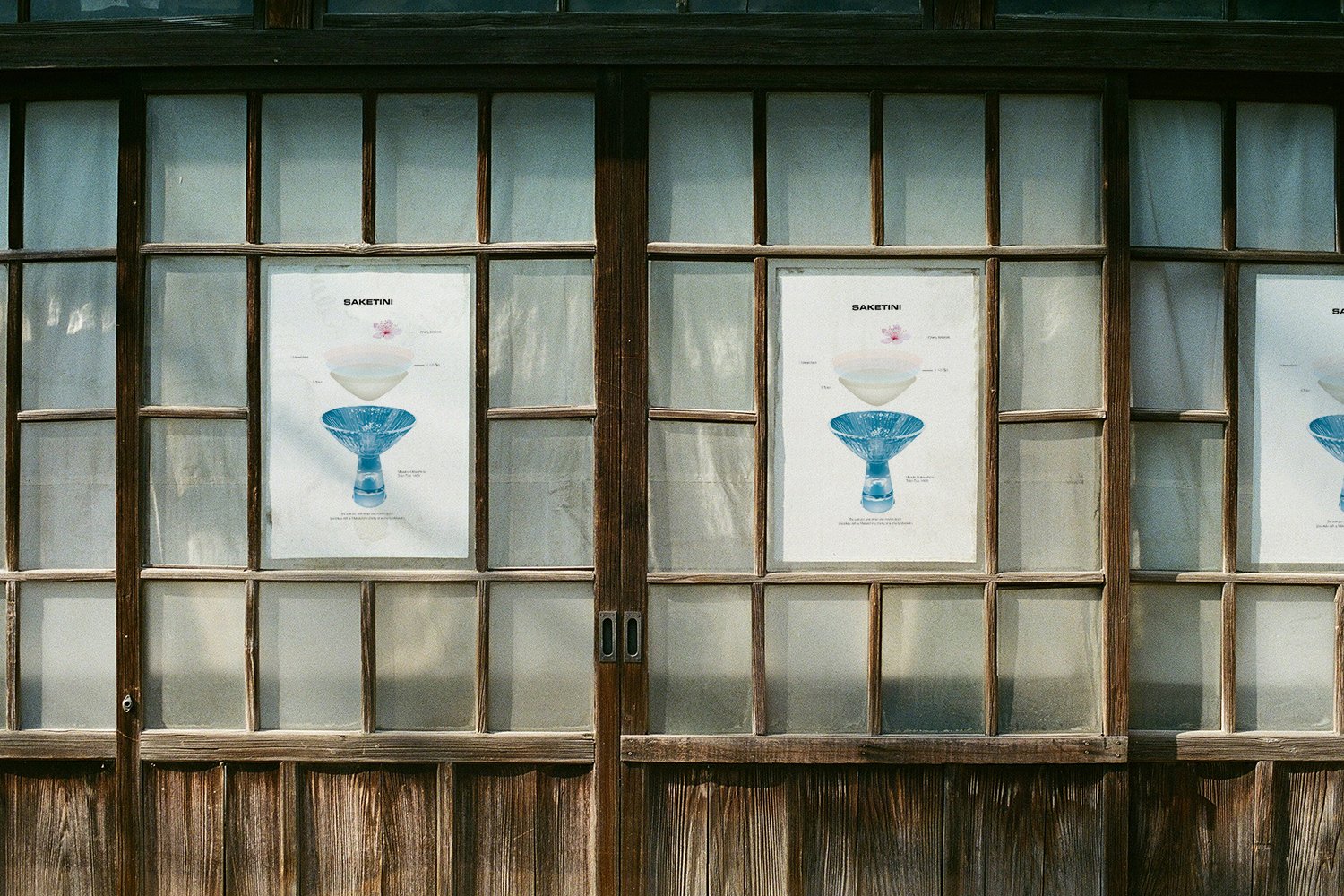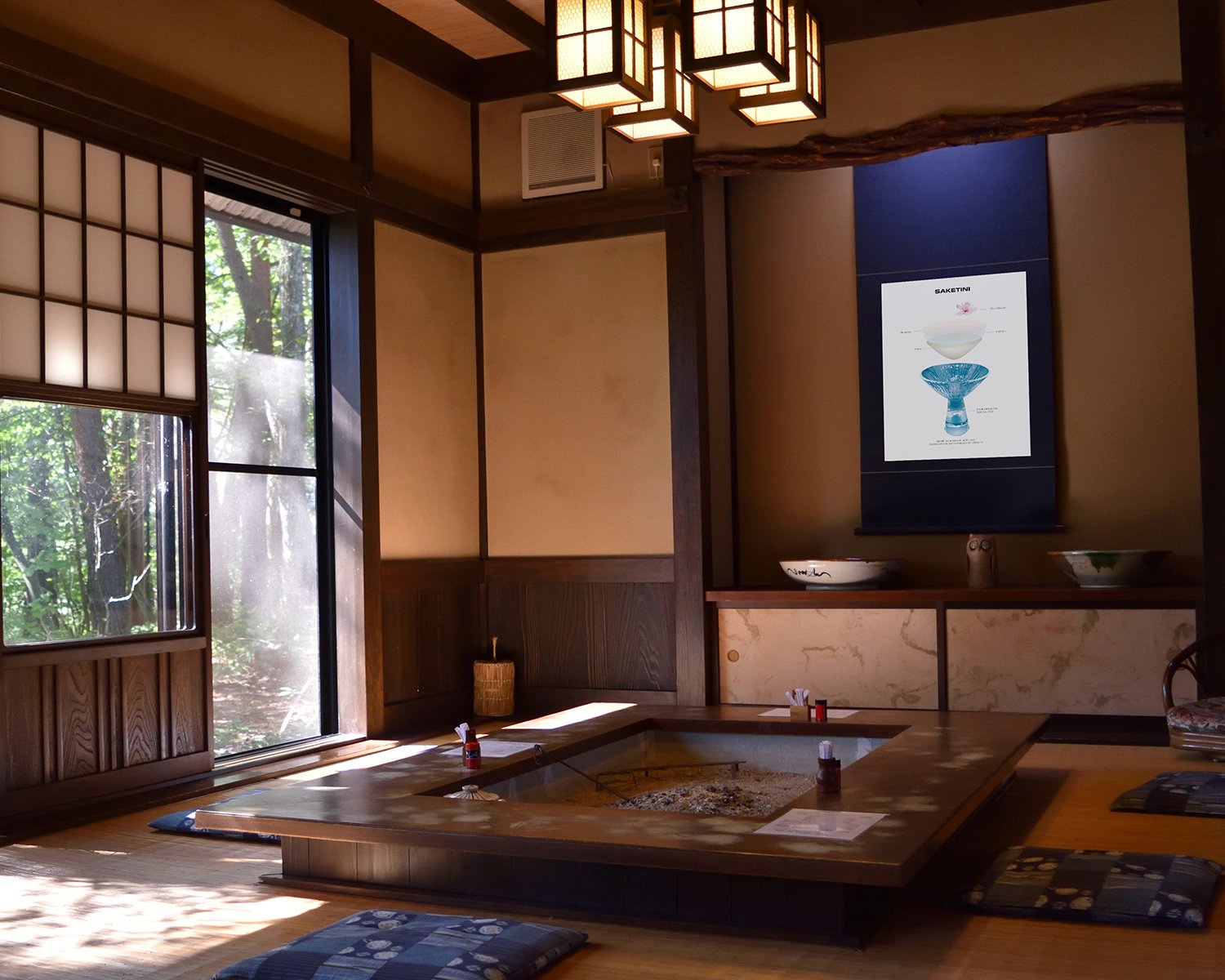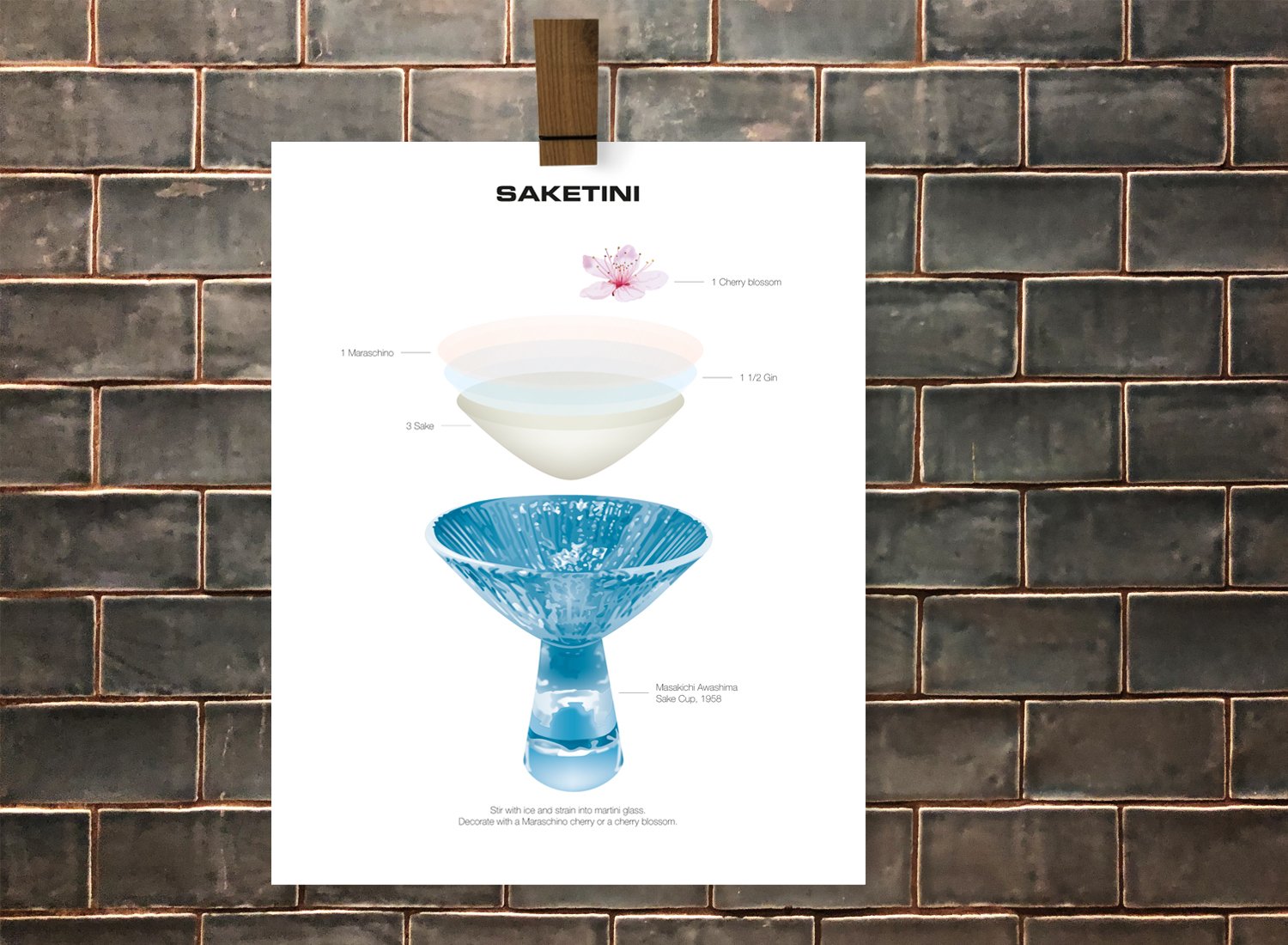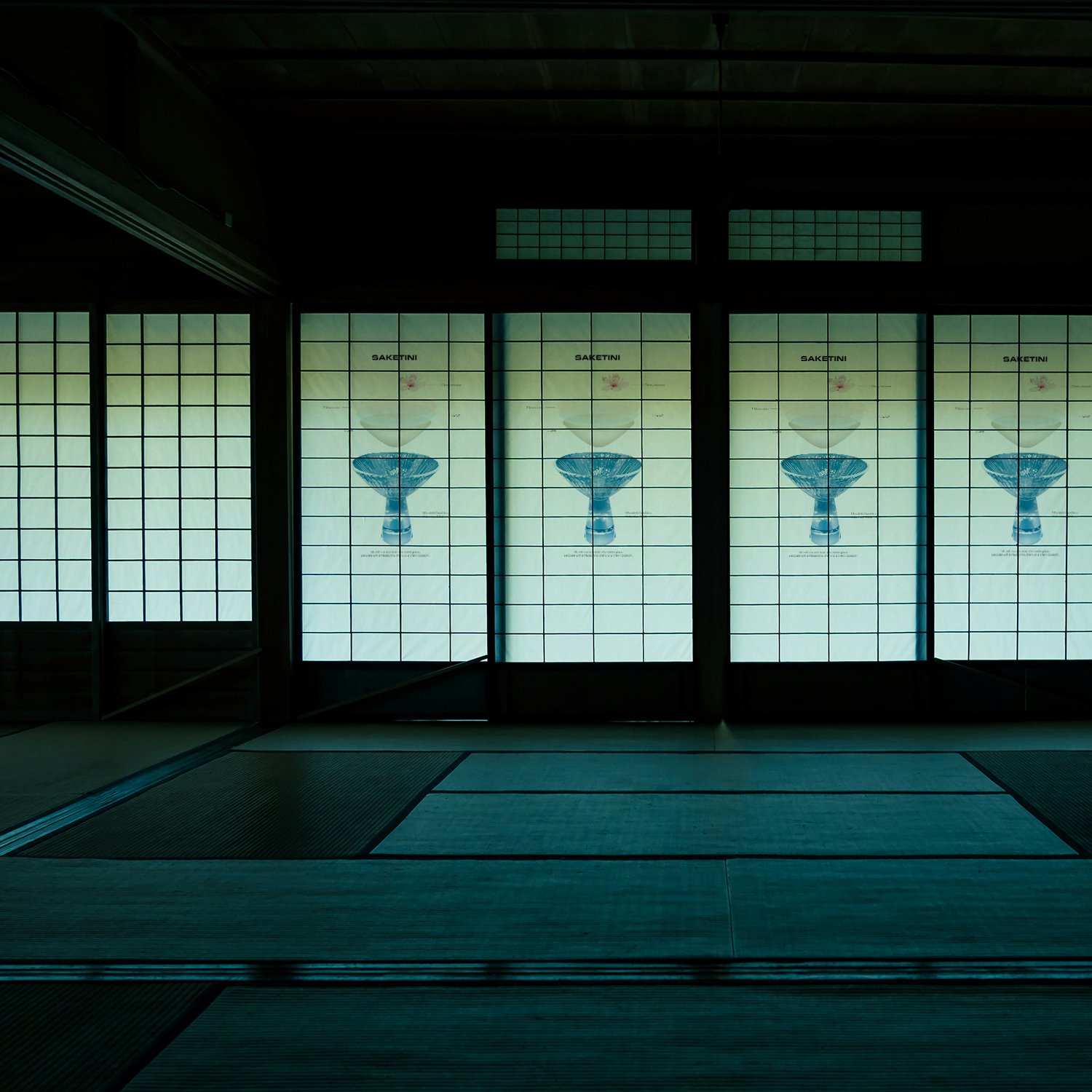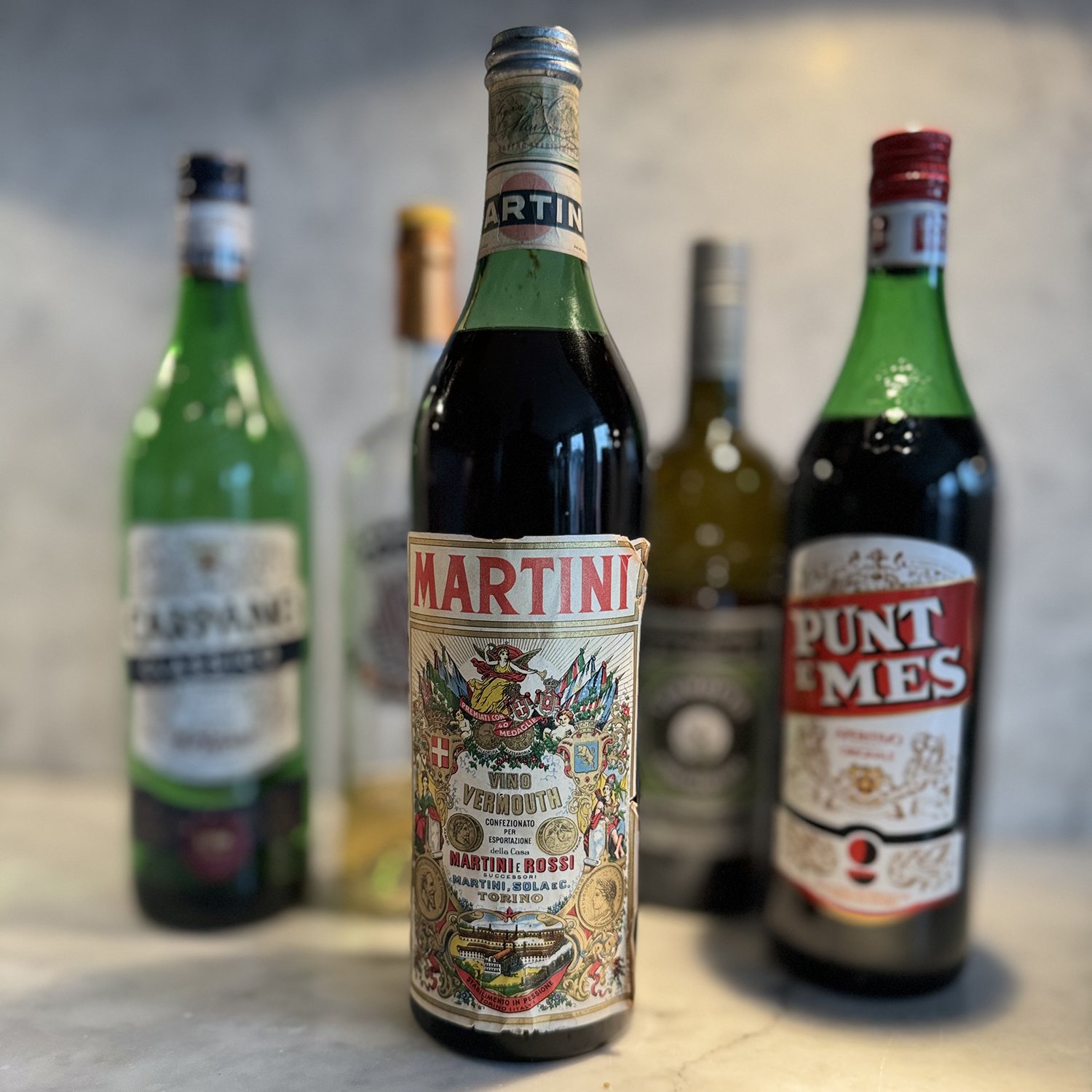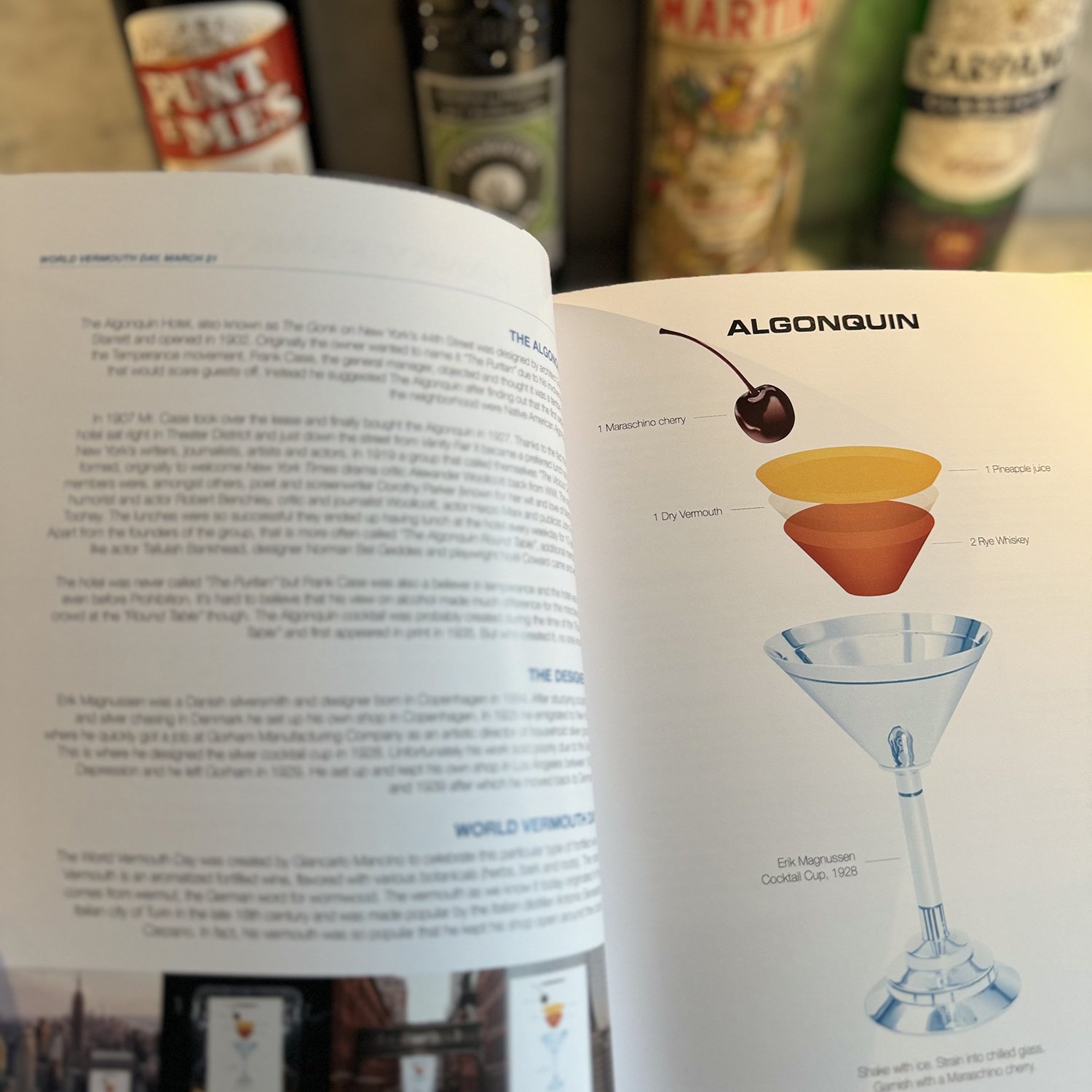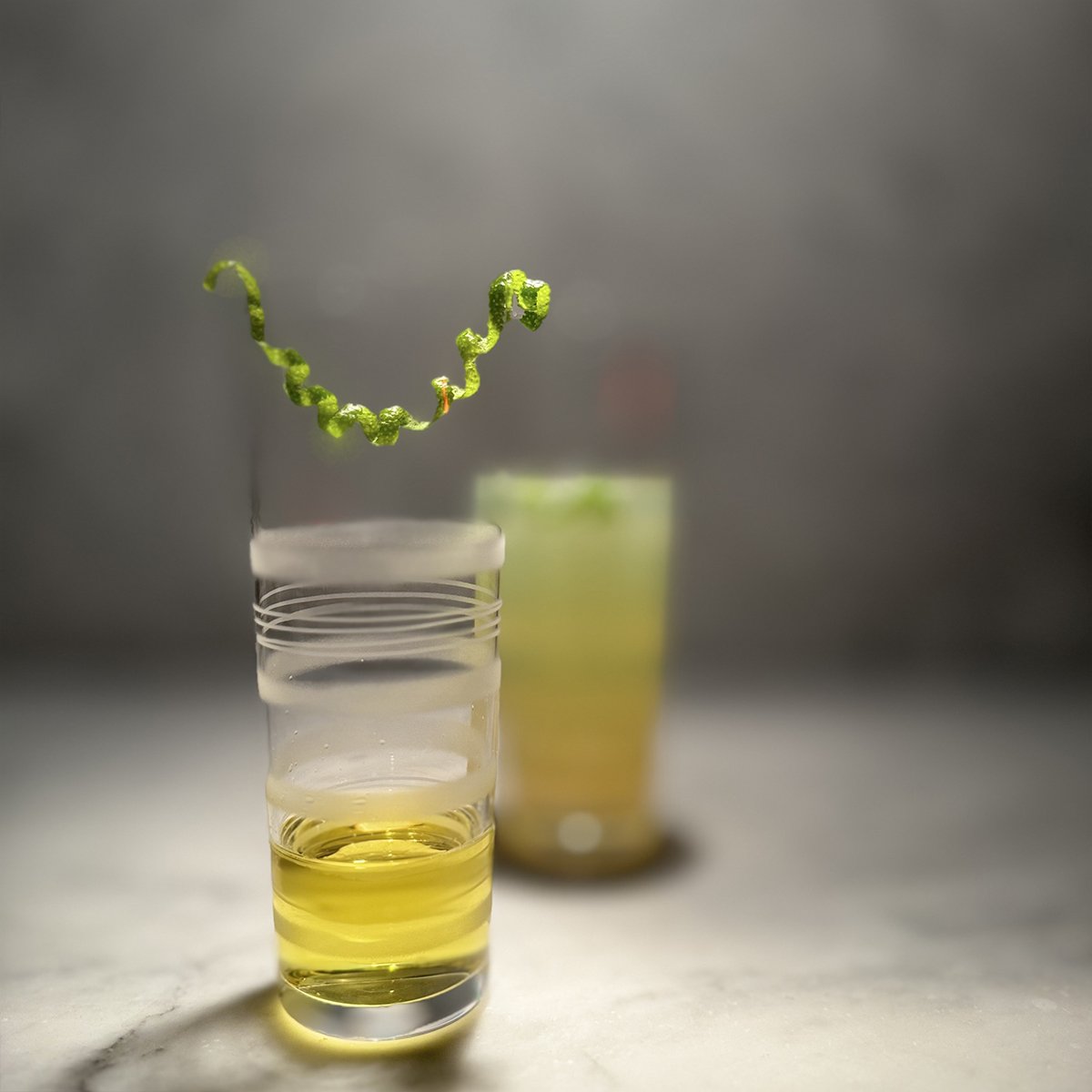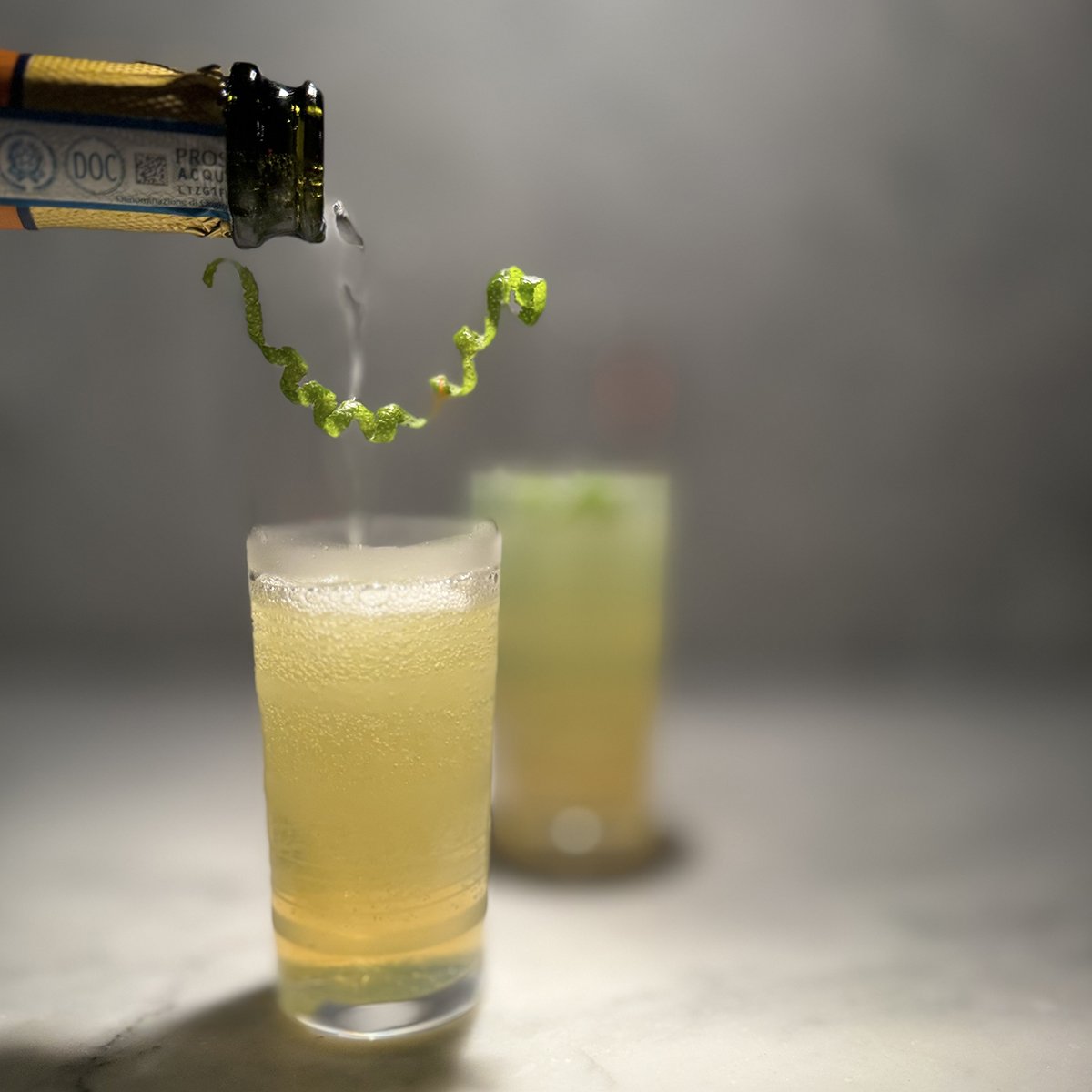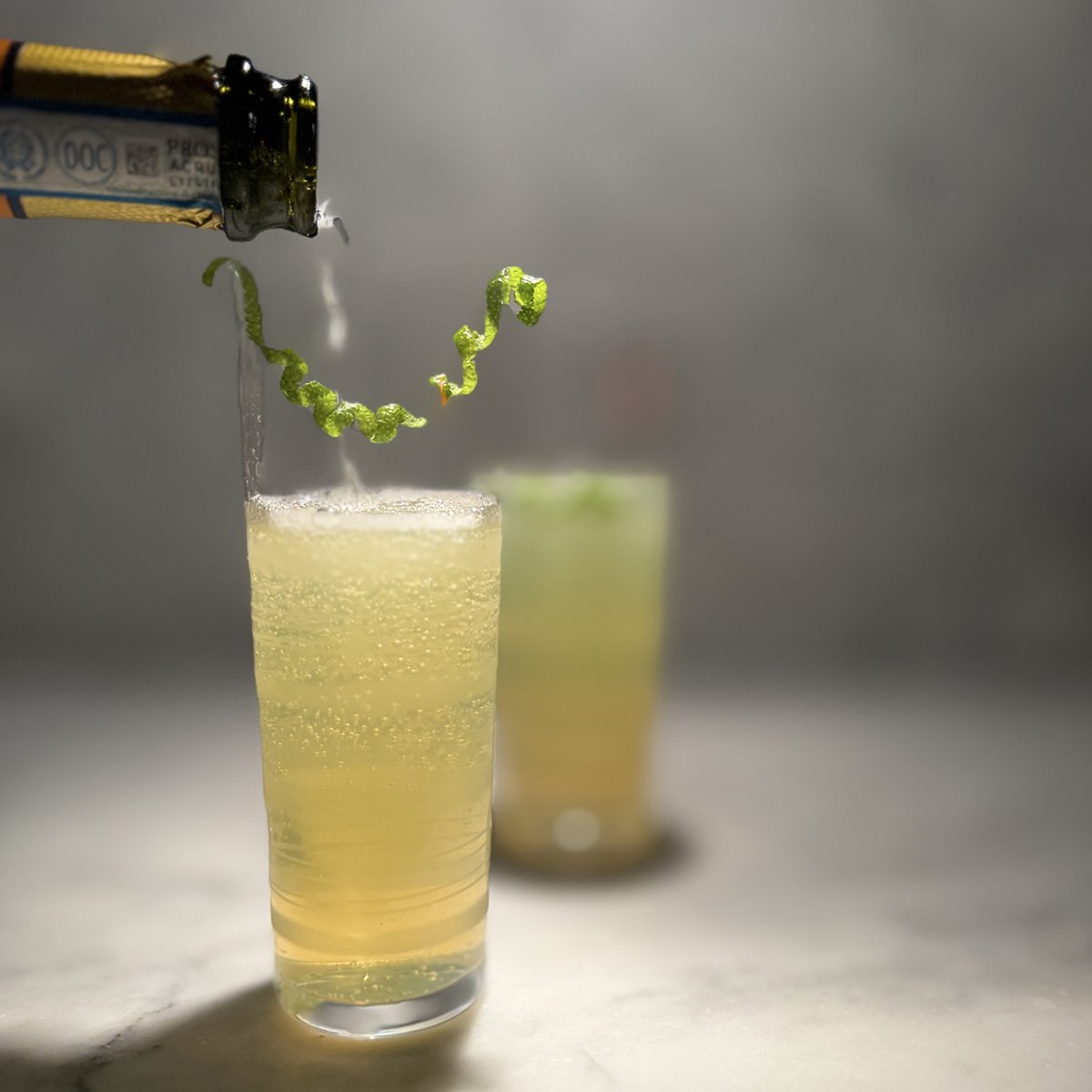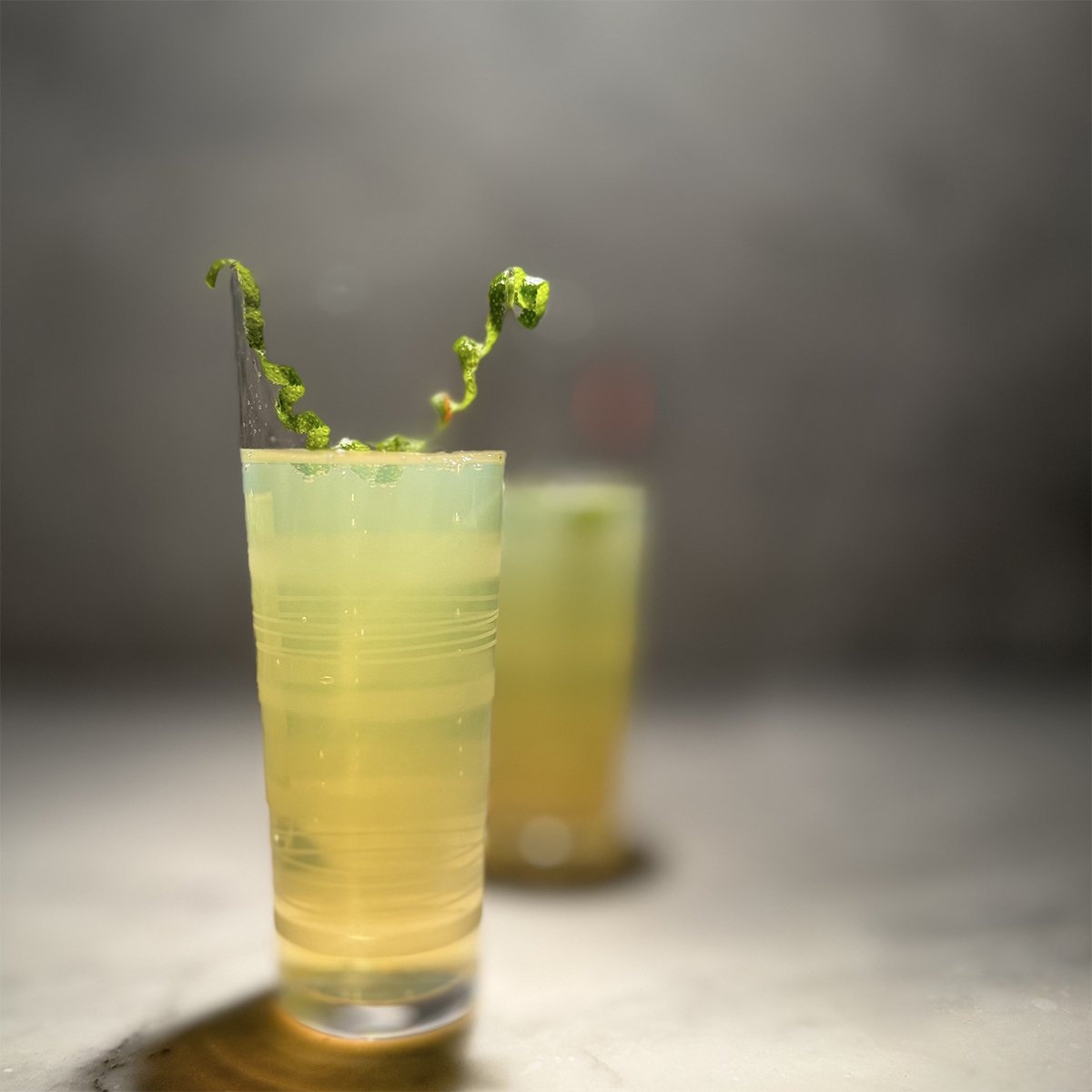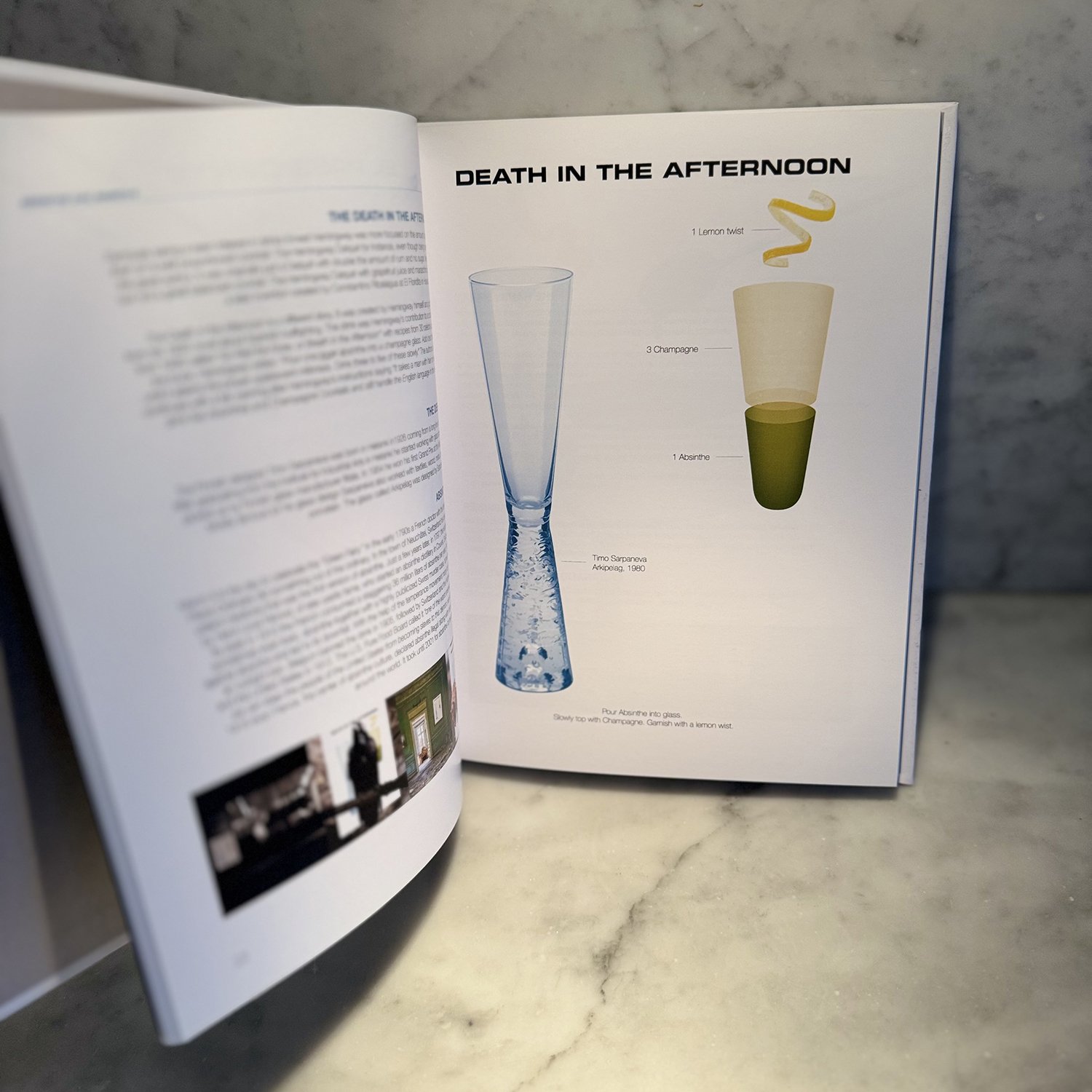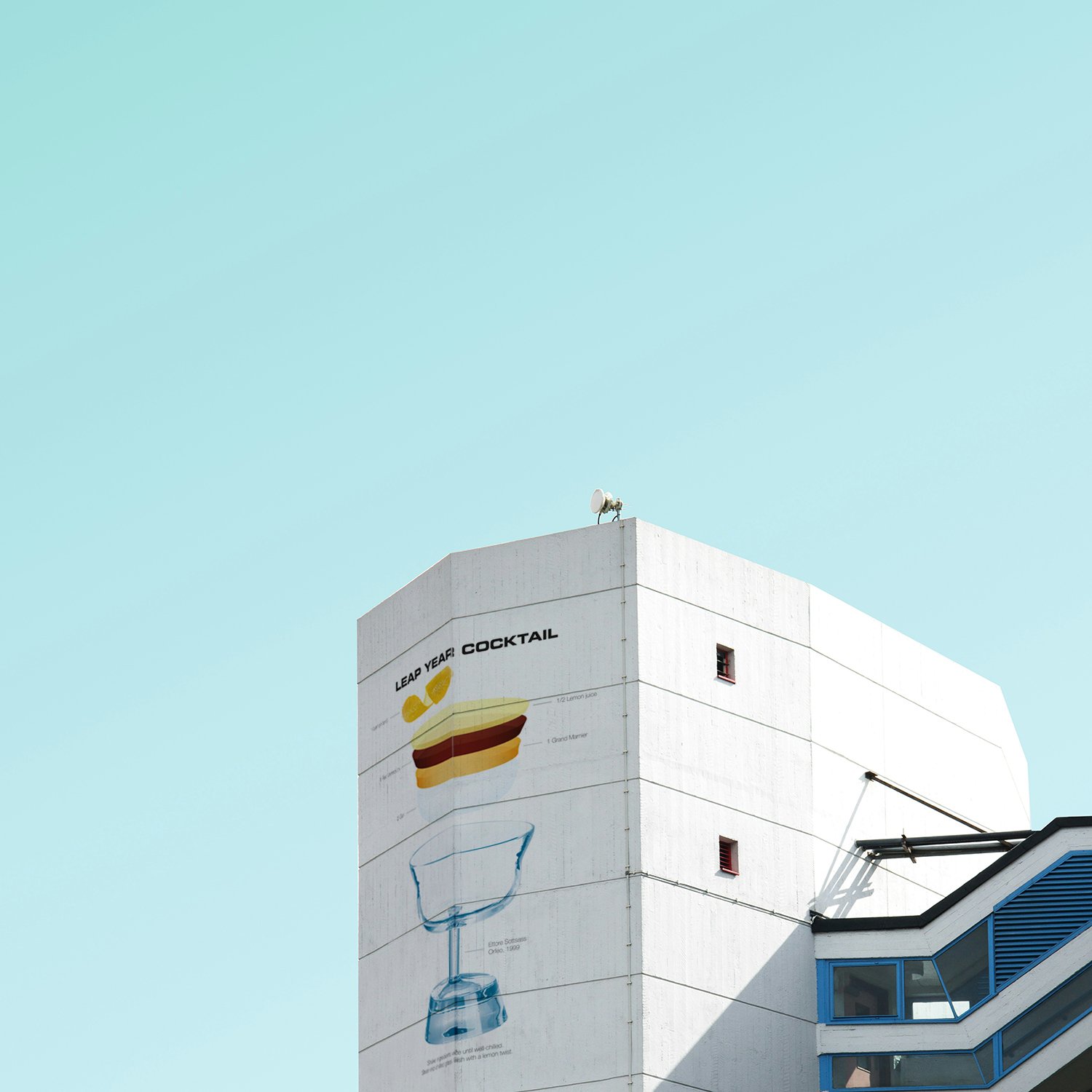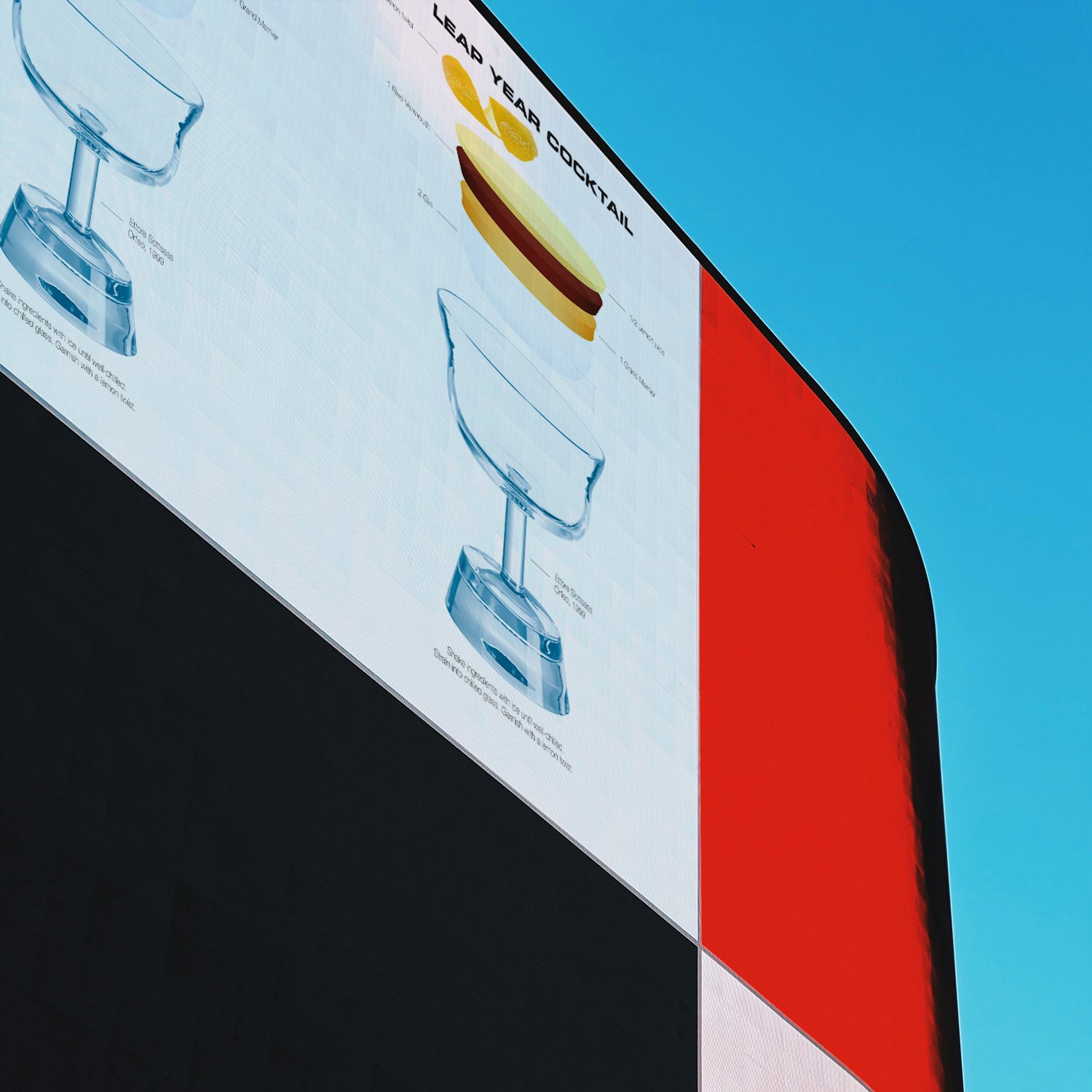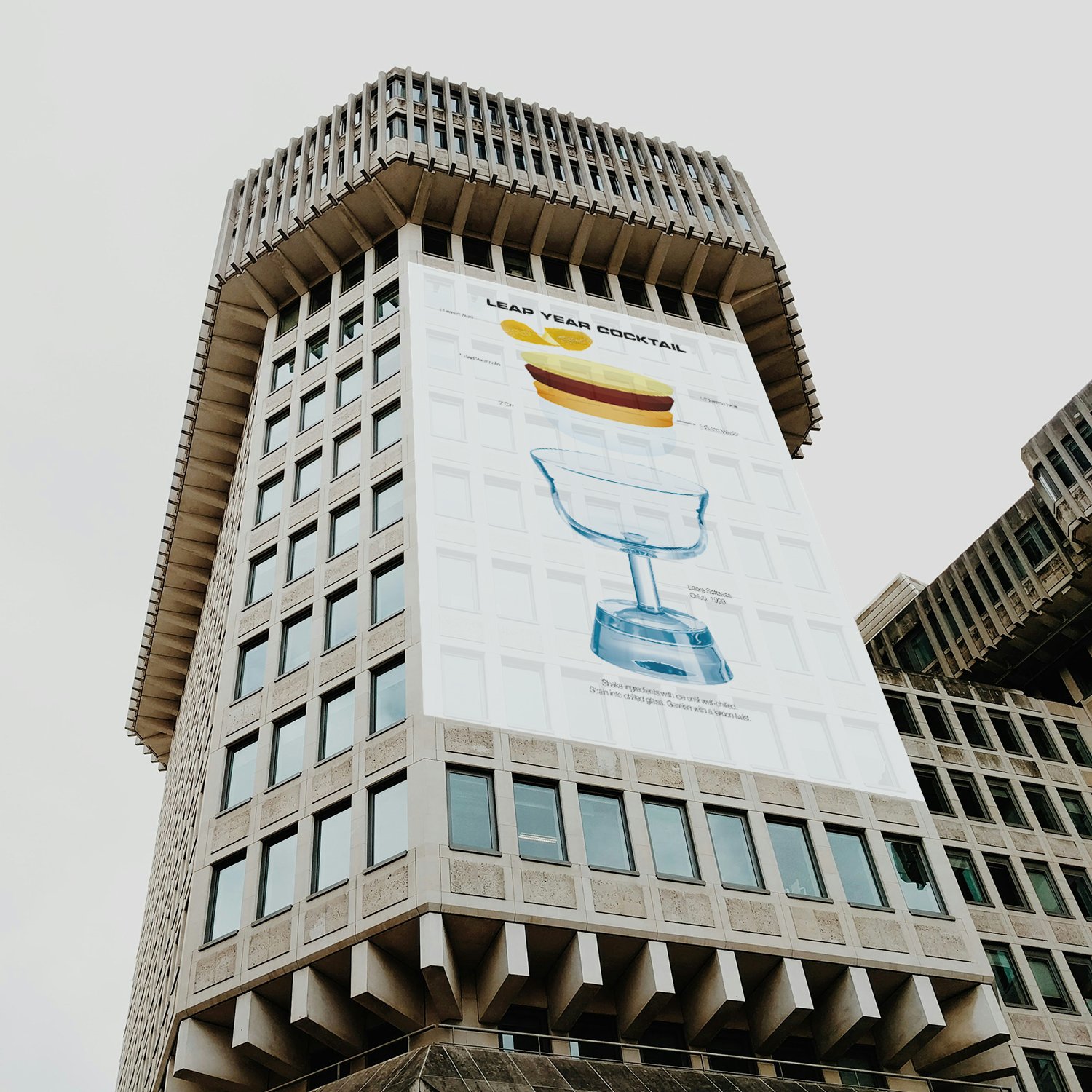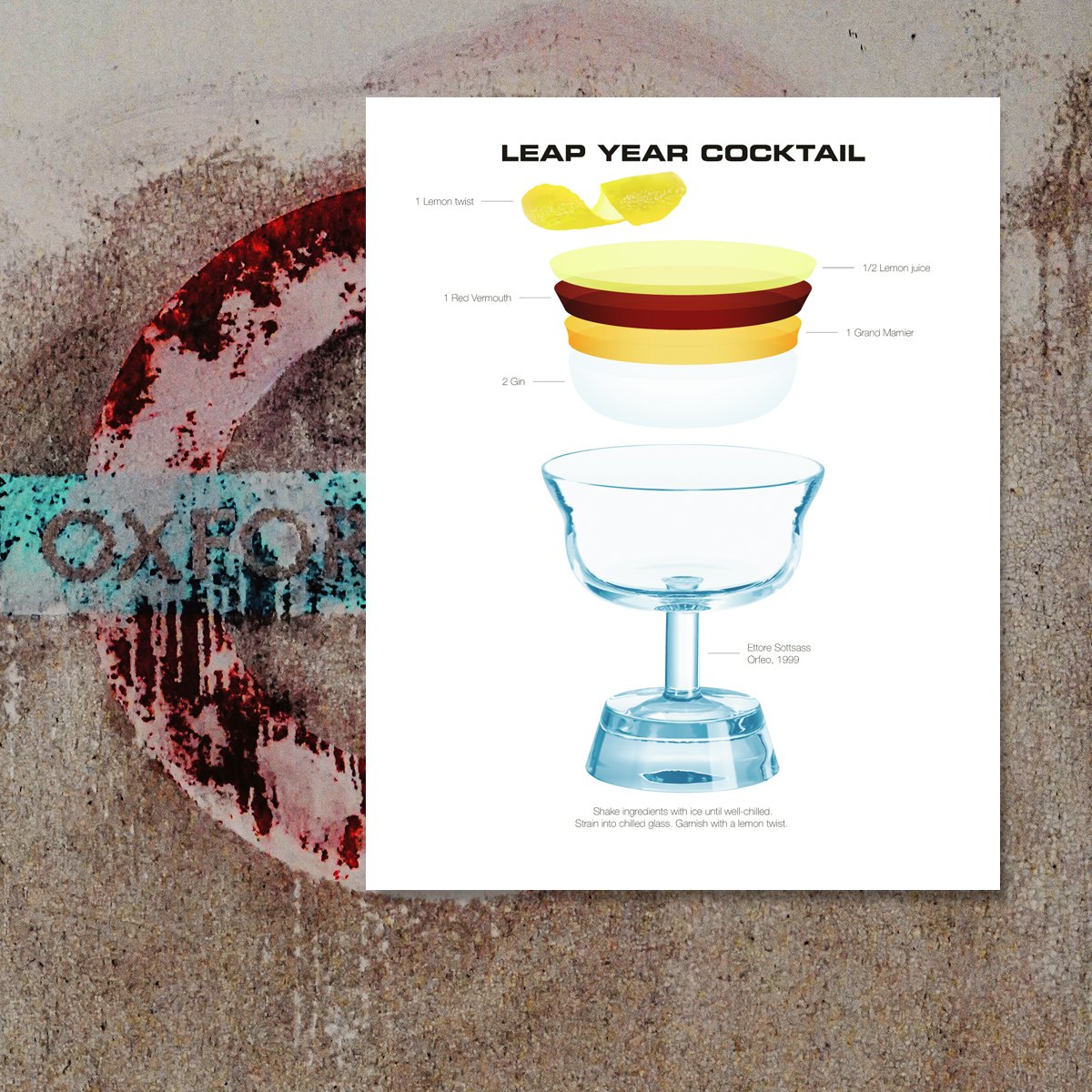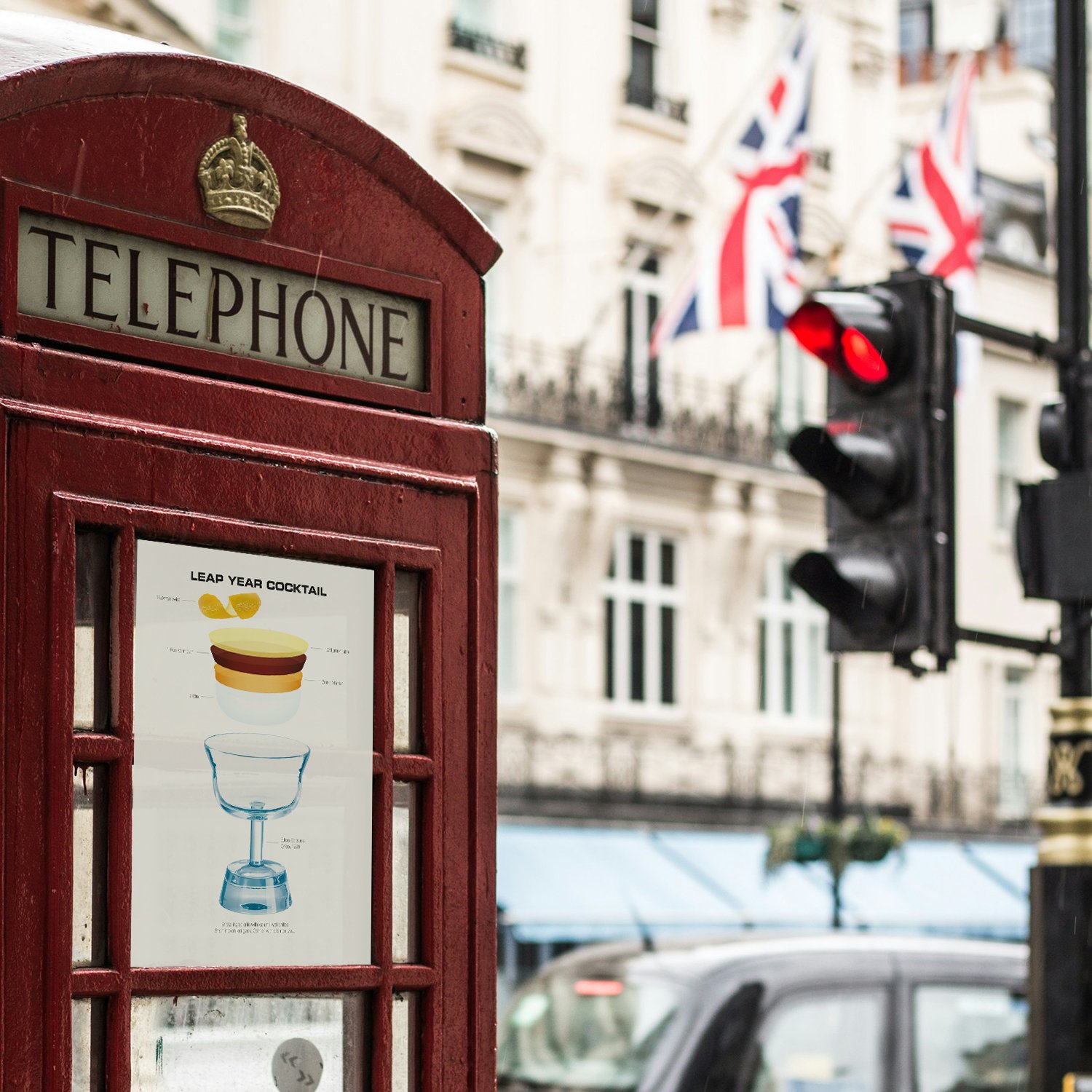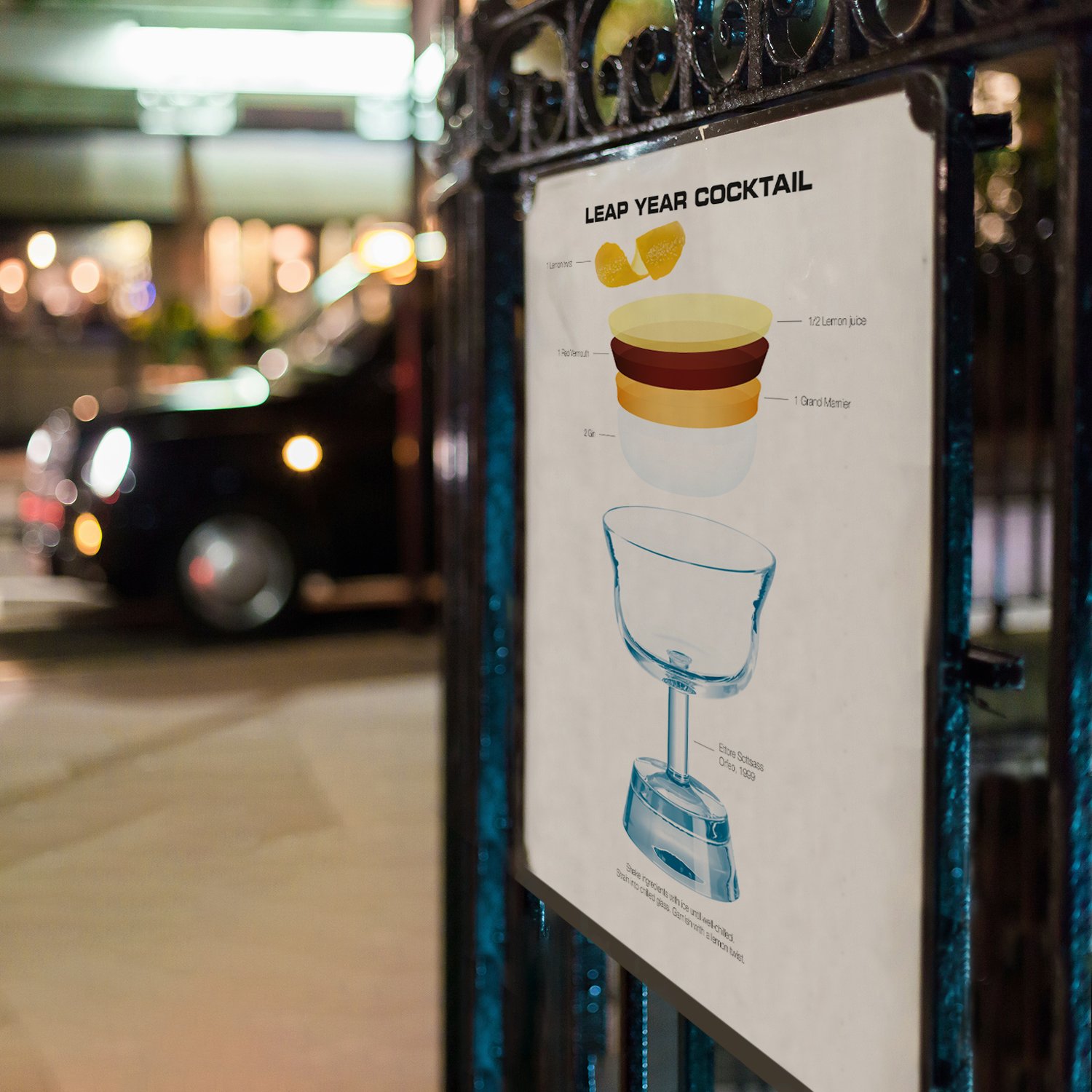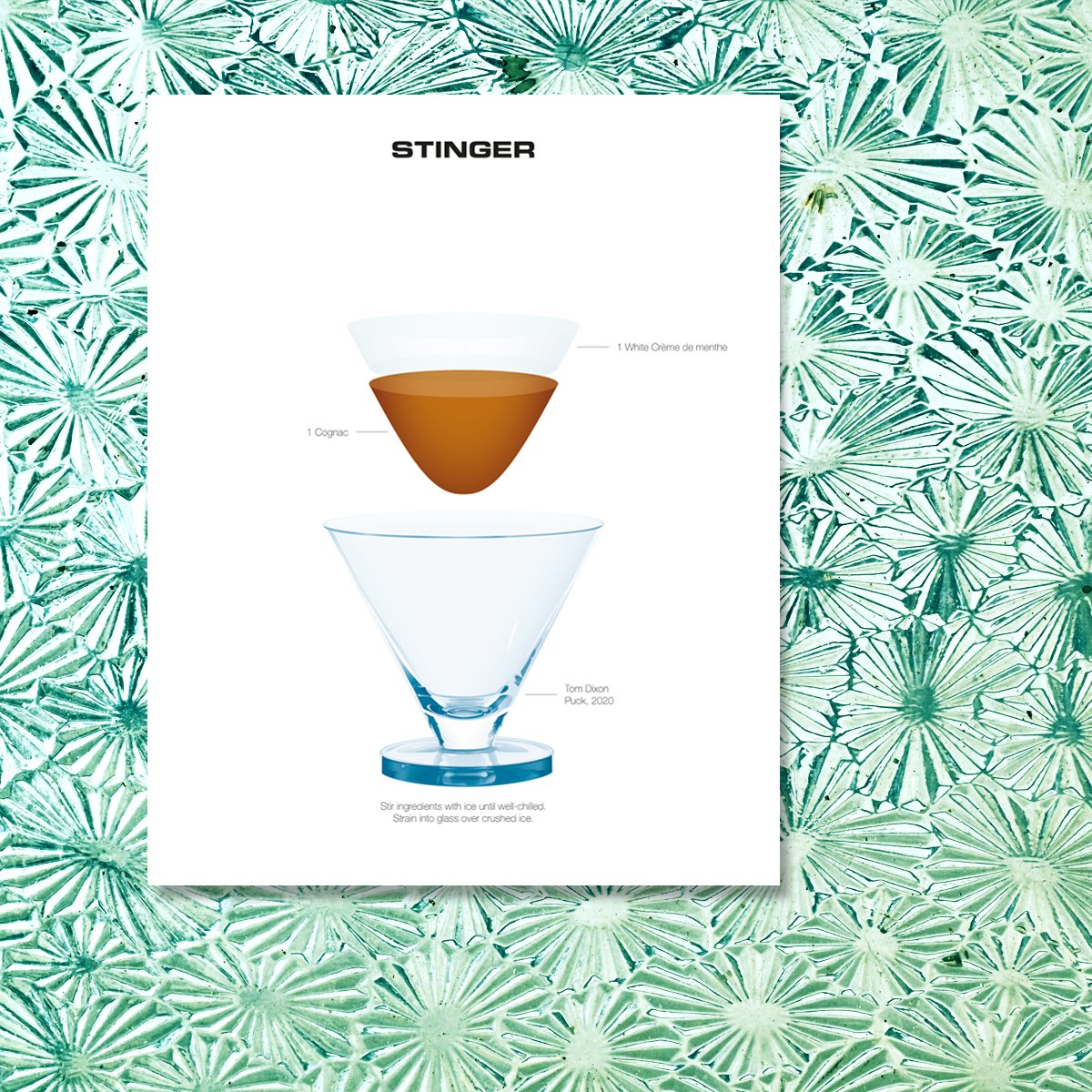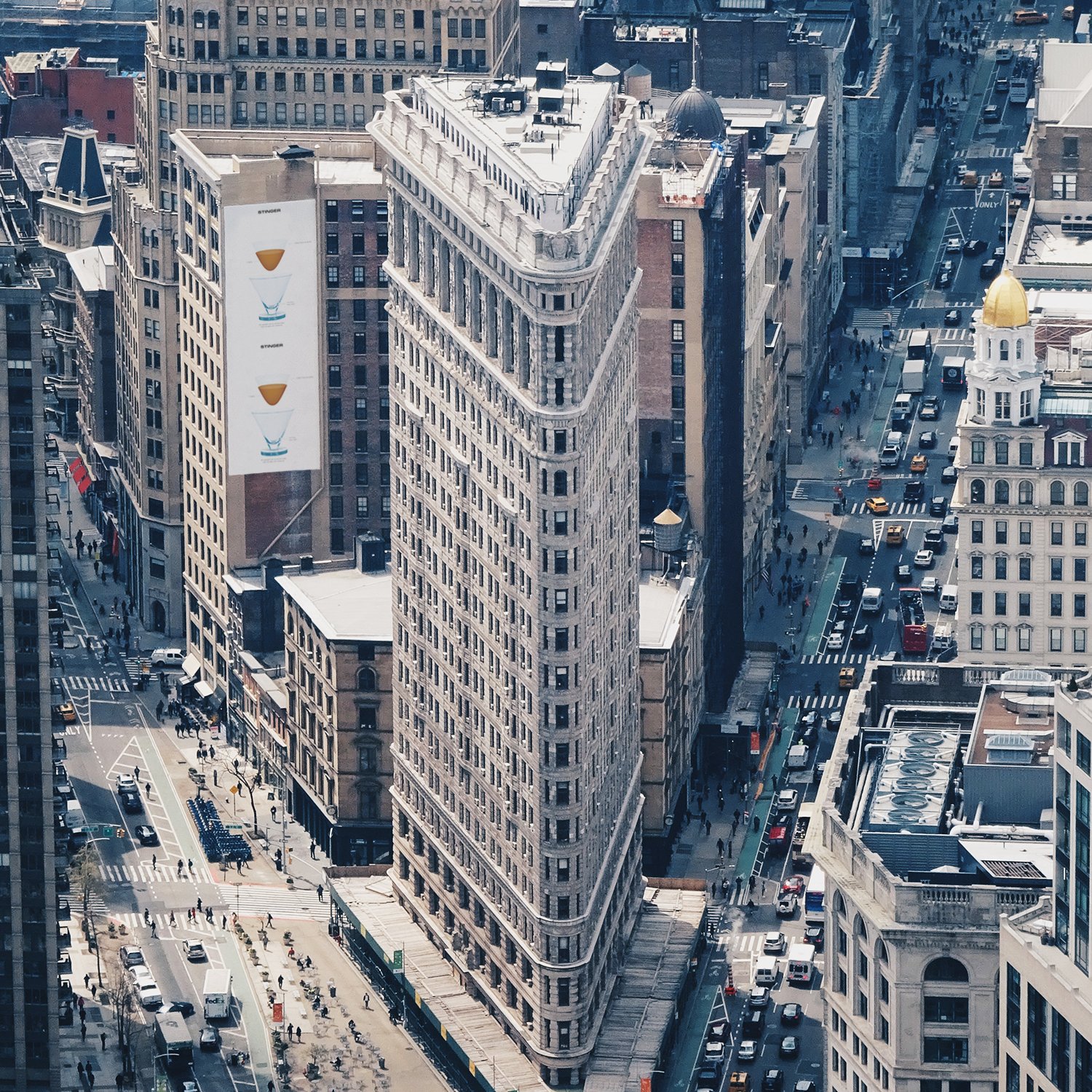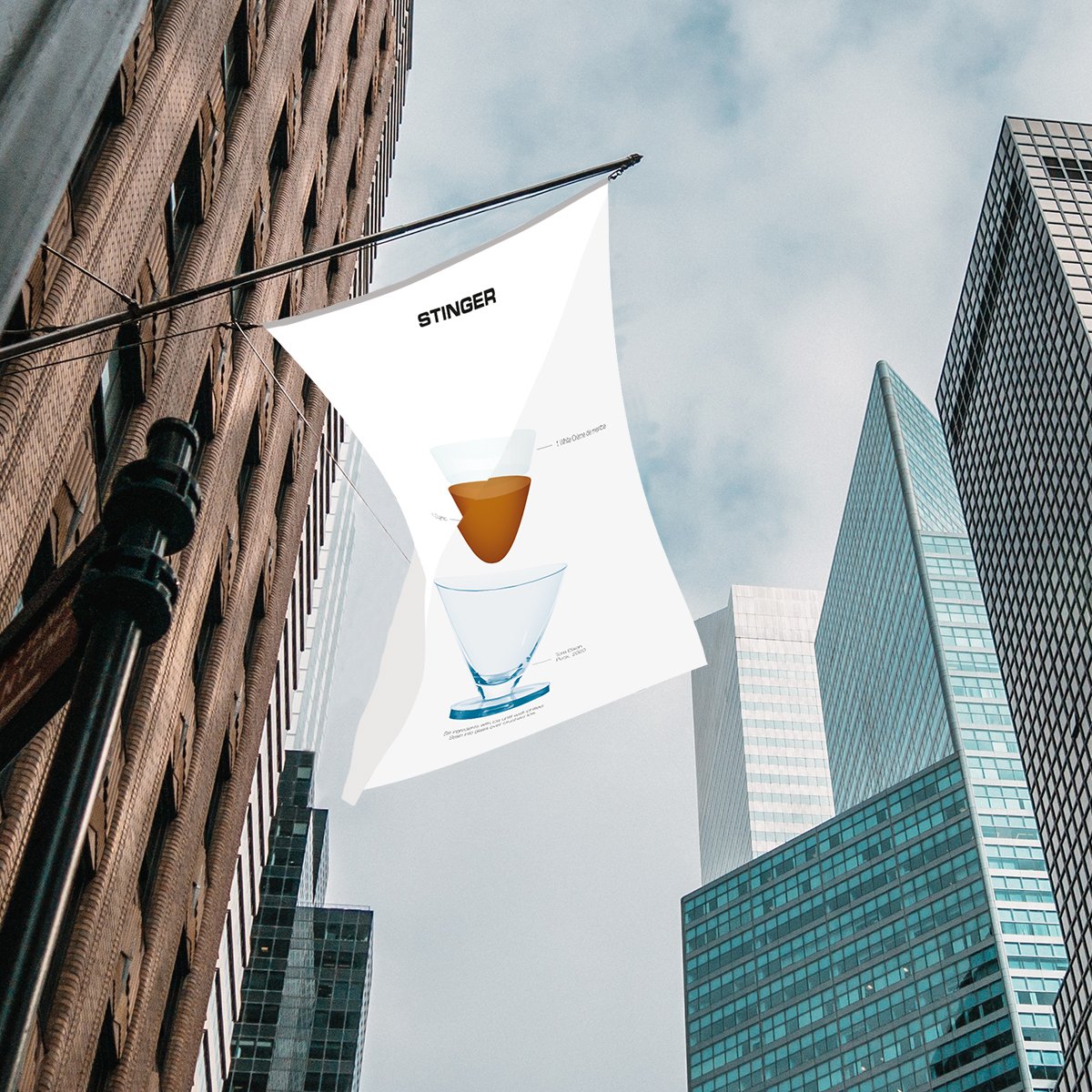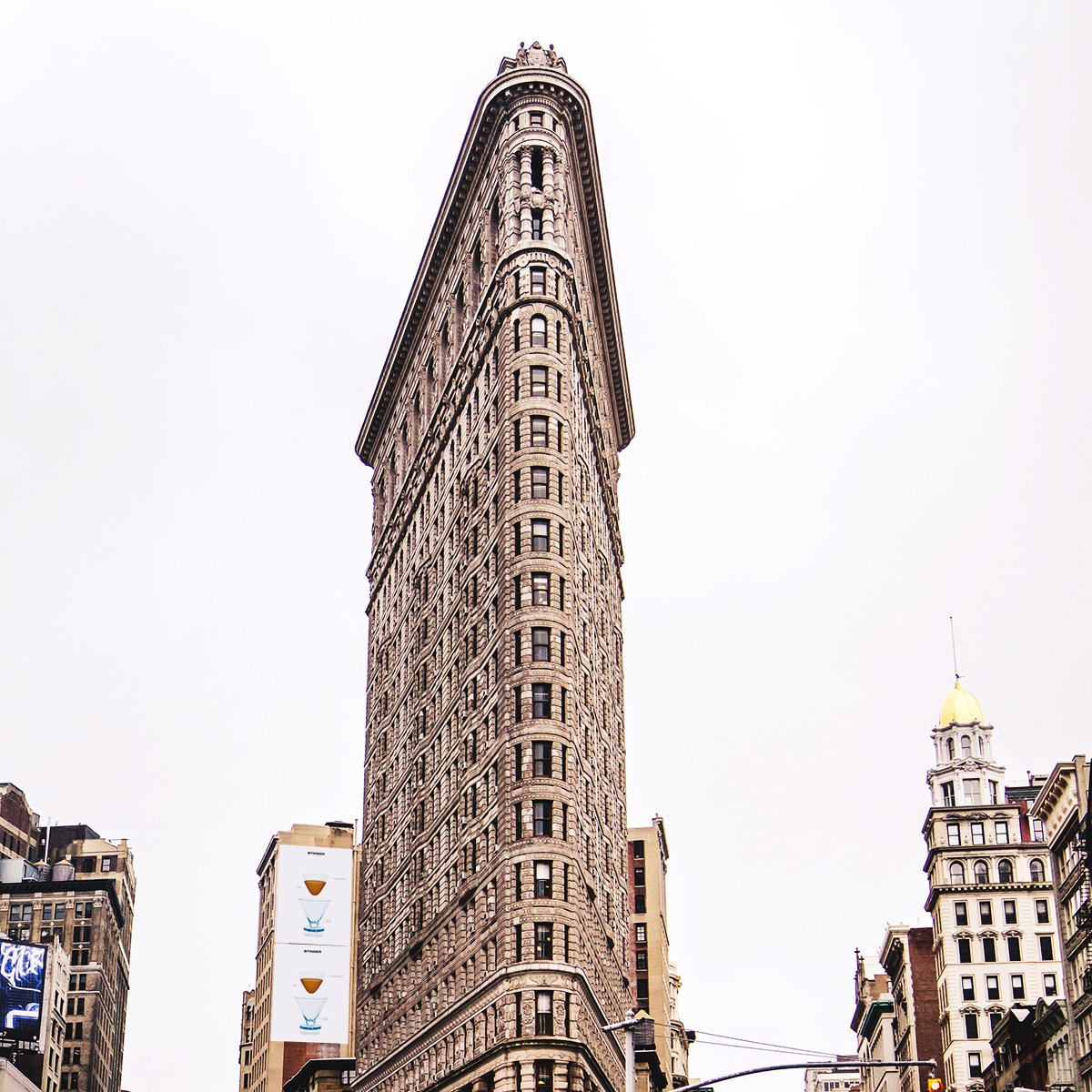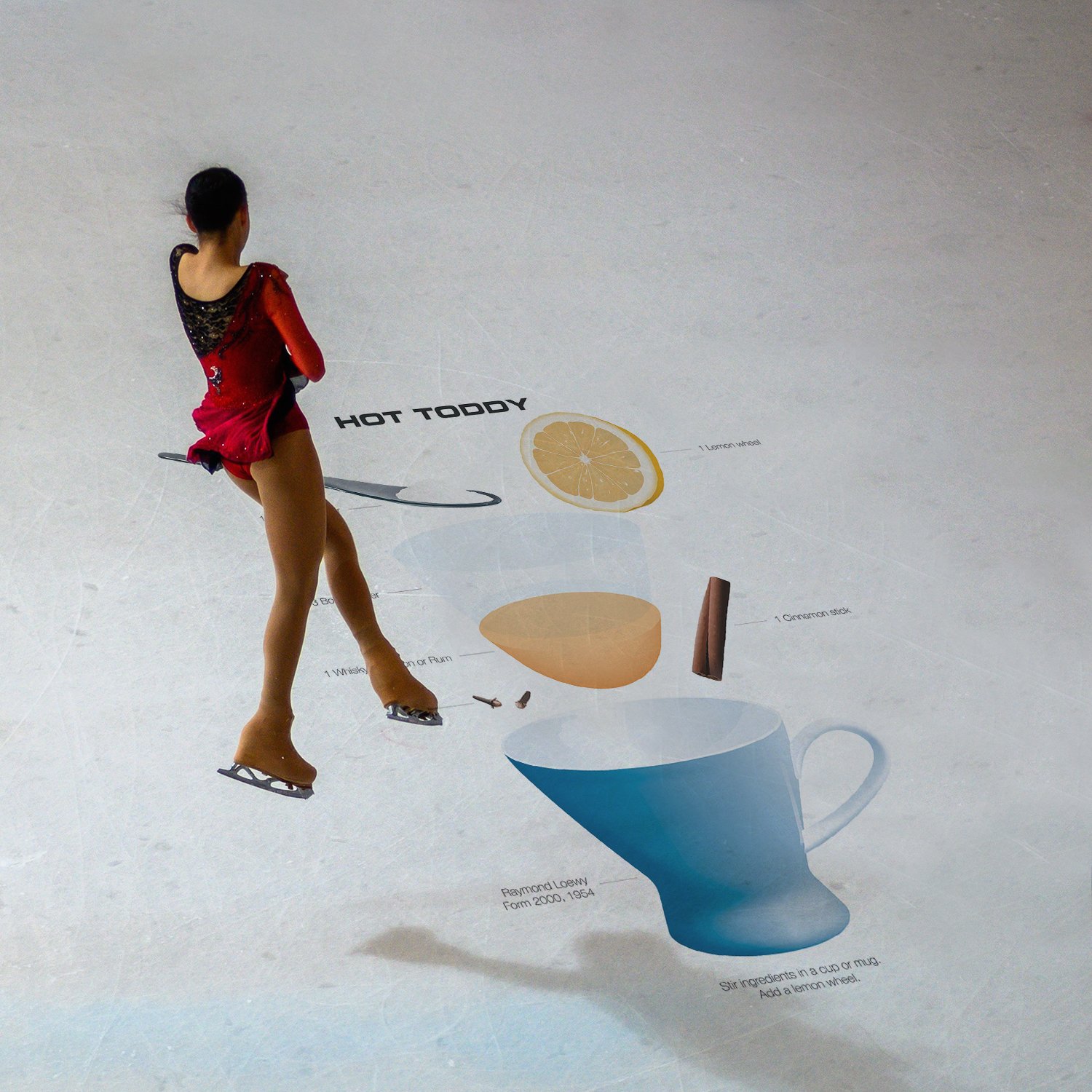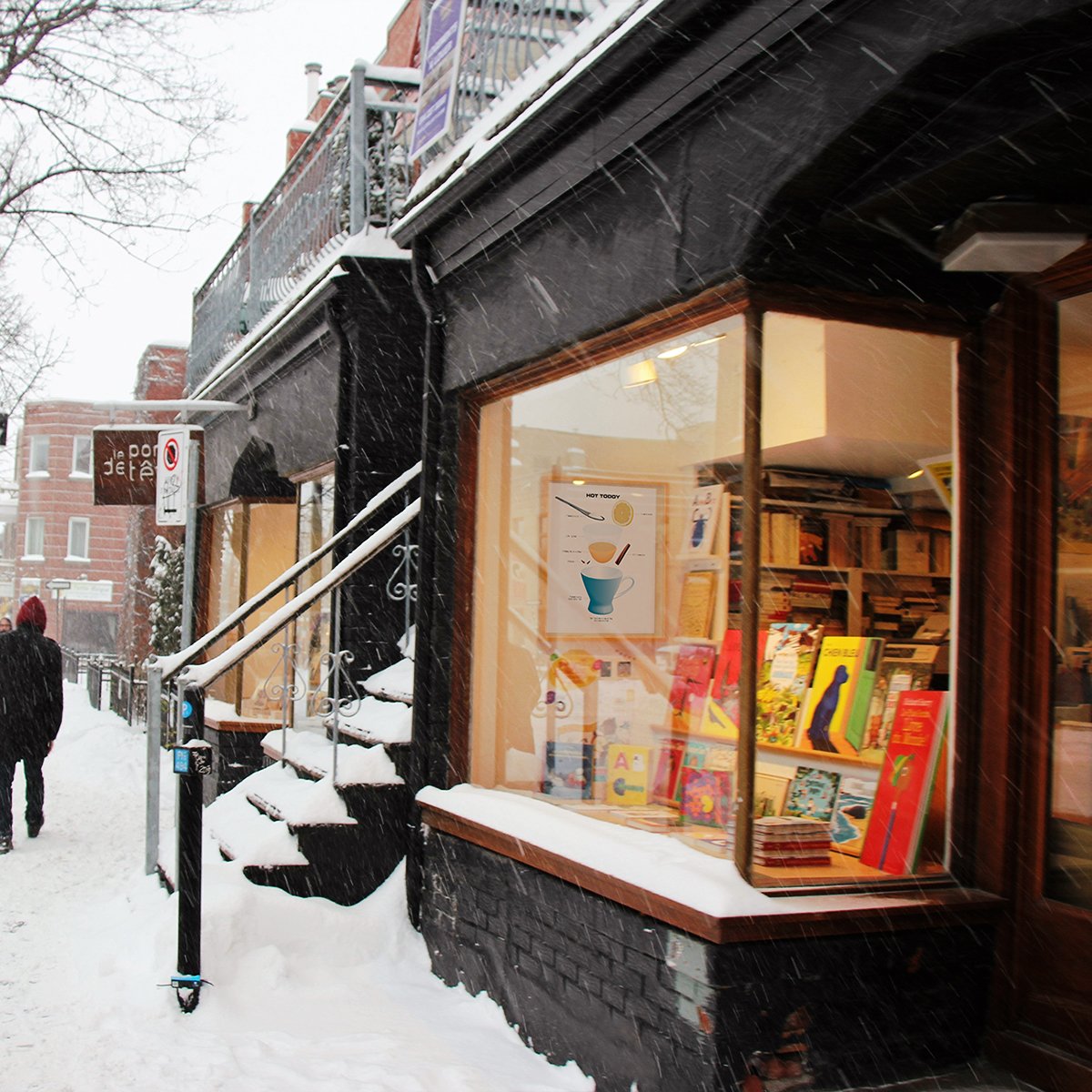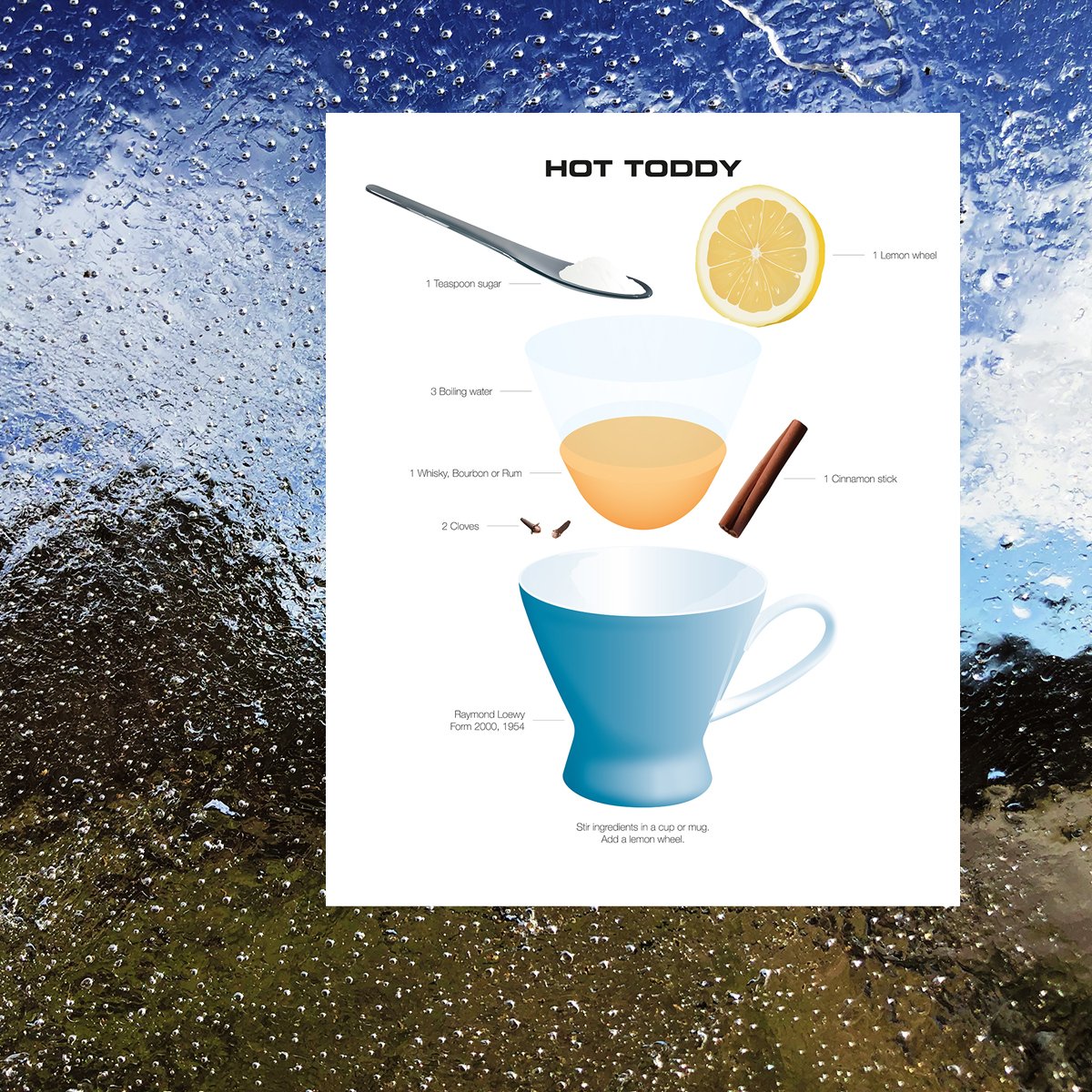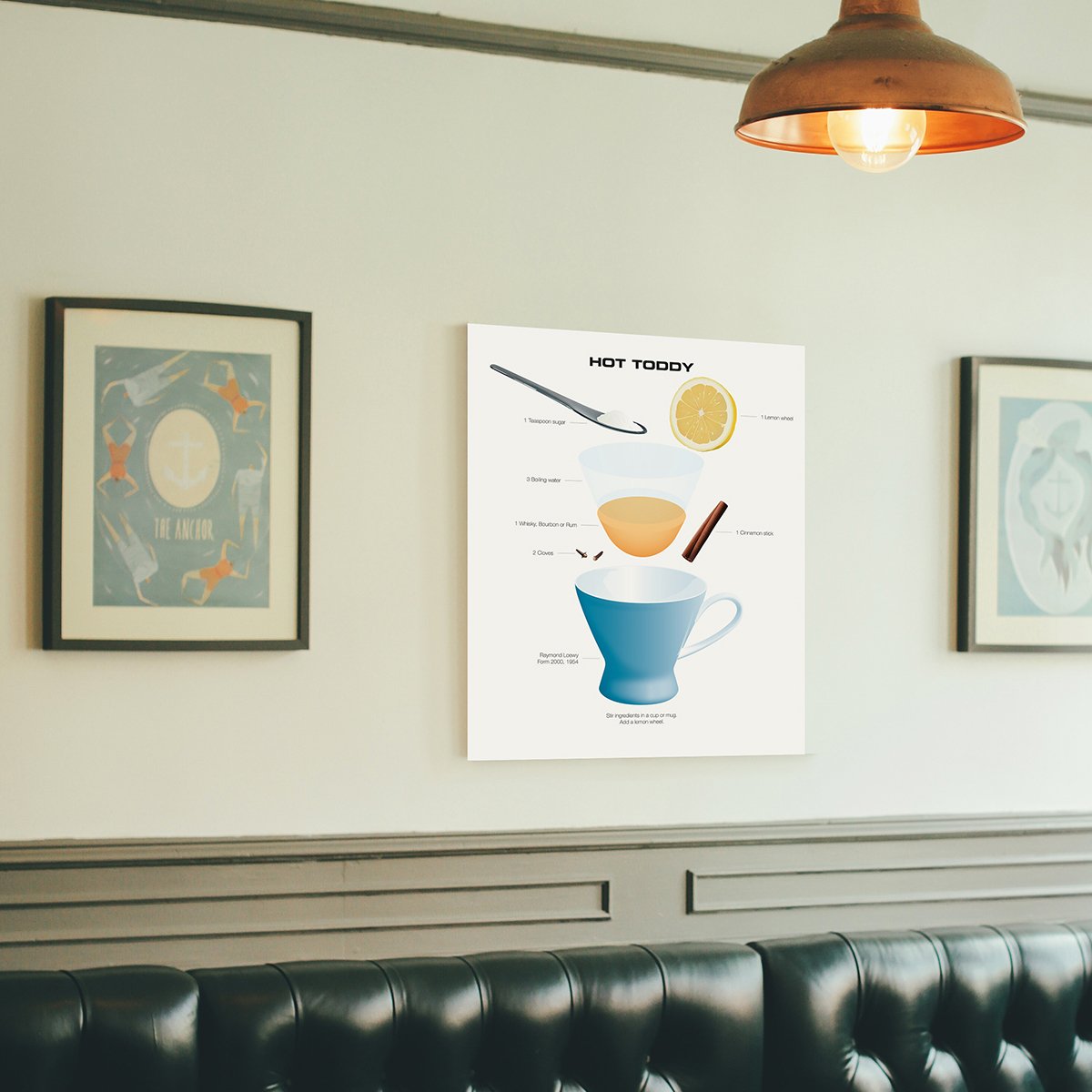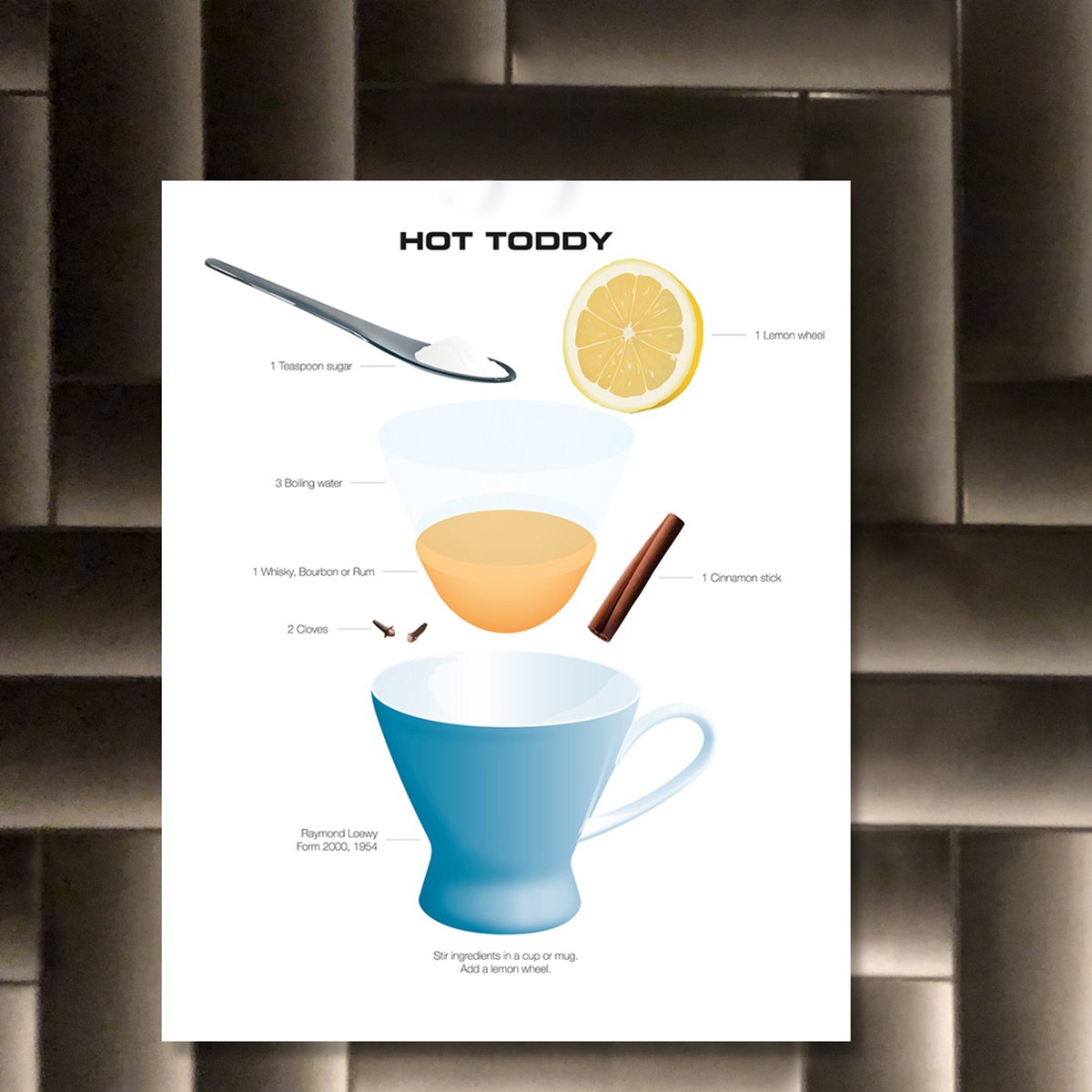On May 13 in 1806 the first known definition of the word cocktail was published in an upstate New York newspaper, The Balance and Columbian Repository. The cocktail, as they wrote it, was described as “a stimulating liquor, composed of spirits of any kind, sugar, water and bitters”. This is also the date Giuseppe Cipriani opened Harry’s Bar in Venice in 1931, home of the Bellini.
THE BEE’S KNEES
The Bee’s Knees was possibly created by the Austrian Frank Meier, during the 1920s when he was the first head bartender at Cafe Parisian at the Ritz Hotel in Paris. During WWII and the German occupation of Paris, Mr. Meier kept the bar open but being half Jewish he started working with the French resistance and handed information about the Germans staying at the Ritz to British intelligence. He also helped Jewish hotel guests escape the concentration camp roundups by providing them with fake documents.
The first time the cocktail was mentioned was in a news article from 1929 where it was attributed to the American socialite Margaret Brown. The article was about women-only bars in Paris and Margaret Brown, being a wealthy widow, shared her time between her home in Denver, Colorado and Paris where she was a frequent guest in these women-only bars. On a side note Margaret Brown also went by her nickname “the Unsinkable Molly Brown” after being one of the 712 people surviving the Titanic in 1912. Yet another background story is that the honey used in the Bee’s Knees was added since it is a great way to hide the harsh taste of cheap bathtub gin. Putting it all together Margaret Brown might have had the cocktail in an American speakeasy and brought the recipe to Paris where Frank Meier made it his own. If so, all three origin stories could be true. But that, of course, is just mere speculation.
THE DESIGNER
Astrid Luglio designed the glass called Travasi in 2023.
Feliz Cinco de Mayo
Cinco de Mayo is a festivity commemorating Mexico’s victory over France in the Battle of Puebla in 1862, during the Franco-Mexican War. Interestingly it is more commonly celebrated in the United States than it is in Mexico and is therefore often mistaken for Mexico’s Independence Day, which is September 16. Celebrations first began in the Californian mining town Columbia where they have been held every year since 1863. But it wasn’t until the 1950s it turned into a big thing thanks to the United States government’s effort to reach out to neighboring countries. Mexican-Americans saw the opportunity to take pride in their former home country and took May 5 to their hearts.
THE BANDERITA
The Banderita, “Little flag”, is a drink made up of three glasses, the first with tequila, the second with freshly squeezed lime juice and the third with Sangrita, together making up the colors of the Mexican flag. The Sangrita, playing the role of chaser (or rather of a sipper) in the Banderita, should be considered the star and is in itself said to make or break a Mexican restaurant. The Sangrita, meaning “Little blood” in Spanish, is a very traditional drink originating in Jalisco, the Mexican state where tequila is made. It is said to have been made from the leftover juices at the bottom of a bowl of pico de gallo. The juice was poured into clay cups and was drunk together with tequila after dinner as a well needed digestif. The Mexican versions of the Sangrita are generally more citrus focused with grapefruit, orange and lime whilst American recipes tend to lean more towards tomato juice, rather like a citrusy Virgin Mary. Whatever the base, the Sangrita is there to perfectly balance the earthy notes of the tequila, enhancing its flavor.
THE DESIGNER
The glasses are called Fasetti and were designed by Kaj Franck in 1964.
The Kentucky Derby
The Kentucky Derby was initiated by Meriwether Lewis Clark, the grandson of William Clark of the Lewis and Clark expedition aiming to explore the 1803 Louisiana purchase. Clark developed the Louisville Jockey Club and started to build a racecourse in 1874 on land that he leased from his cousins John and Henry Churchill. Modeled on the English Classic, the Epsom Derby, the annual Kentucky Derby is the oldest consecutively held thoroughbred horse race in the United States. Together with the Kentucky Derby, the Belmont Stakes and the Preakness make the coveted Triple Crown of the United State horse racing. The Kentucky Derby is held on the first Saturday in May. This year the Kentucky Derby celebrates its 150 year anniversary.
THE MINT JULEP
The Mint Julep was first referenced in 1784 as a medicinal concoction to cure an upset stomach. In the late 1700s it eventually transformed into a cocktail for the elites in the southern parts of the United States. This since crunched ice is a big part of the drink and it was usually served in a silver cup. Both of which were only found in the households of the upper class. The Mint Julep was introduced to Washington D.C. in 1850 by Henry Clay, a United State Senator from Kentucky, and it ended up being a favorite cocktail of several presidents. Theodore Roosevelt for instance got his cabinet members to play tennis with him by offering them Mint Juleps afterwords.
In 1938, the Julep was named the official drink of the Kentucky Derby. In a normal year at the Derby they serve up almost 120,000 Mint Juleps over the weekend. This requires an astonishing 10,000 bottles of Old Forester Mint Julep Ready-to-Serve Cocktail, 1,000 pounds of freshly harvested mint and 60,000 pounds of ice.
THE DESIGNER
The Slant glass was designed by Teruhiro Yanagihara in 2006 for Kimura Glass.
Celebrating Louisiana Statehood
The Kingdom of France had been controlling the Louisiana territory from 1682 until it was given up to Spain in 1762. In 1800 Napoleon wanted to re-establish a French colonial empire and got it back in exchange for Tuscany. With a war with England lurking he decided to sell it off to the United States in 1803 as part of the Louisiana Purchase. At the time of the purchase the Louisiana territory was enormous. It reached into Canada in the north, engulfing most of Montana, North Dakota, Wyoming and Minnesota, all of South Dakota, Iowa, Nebraska, Kansas, Missouri, Oklahoma and Arkansas as well as parts of Colorado, New Mexico and Texas along with Louisiana itself. The border to the north, southwest and the area east of the Mississippi were however disputed with Spain until 1812. After that, Louisiana was admitted to the Union as the 18th state on April 30, 1812, with basically the same borders as the present state.
THE VIEUX CARRÉ
Just like the Hurricane, the Sazerac and the Grasshopper, the Vieux Carré was created in the “Big Easy”, New Orleans. The name of the drink is French for old square or old quarter, being the original name of the New Orleans’ French Quarter. When ordering the drink the Creole way of saying it is Voo car-ray.
The cocktail was invented in the mid to late 1930s by Walter Bergeron, head bartender at the Carousel Bar in the Hotel Monteleone. The Hotel Monteleone opened in 1886 when a Sicilian nobleman, Antonio Monteleone, bought the hotel in the early 1880s. Still after five generations, the hotel still remains in the family. The Carousel Bar as you find it today was installed in 1949 and is decorated with paintings of circus animals and is lit up just like a real carousel, rotating at the smooth pace of 15 minutes per revolution.
Day Drinking In Disguise
The Tokyo Kaikan (meaning Tokyo Meeting Hall) was built in 1921, facing the Imperial Palace. It soon became a favorite spot for the city’s corporate elite with its restaurants, ball rooms and meeting rooms. The bar had five bartenders on its staff during the 1920s.
From the surrender of the Empire of Japan in September of 1945 until the Treaty of San Francisco in April of 1952, Japan was occupied and administered by the Allied Forces. During this period the Tokyo Kaikan functioned both as the US military officer’s club and as the Tokyo American Club for expatriate businessmen. With the influx of American soldiers the Kaikan soon went from five to forty bartenders on the payroll serving up to 1000 customers per day.
During the post-war occupation, people of Japan were living under hard conditions and rations while some of the American troops spent their free time in the bars of Tokyo. Overseeing the occupation was Supreme Commander for the Allied Powers, US General Douglas MacArthur. Entering the bar at the American Club in Tokyo in April 1949, General MacArthur was horrified to find American soldiers having fancy cocktails long before lunch when the Japanese outside were suffering.
After reprimanding his troops the American party stopped. That is until a crafty bartender, possibly Japan’s most famous bartender, Kiyoshi Imai, who worked the bar at Tokyo Kaikan, had a stroke of genius. He took a regular Gin Fizz, dialed down the seltzer, added an ounce of milk and called it the Kaikan Fizz. This made the drink look like a healthy glass of milk and no general could be opposed to something as wholesome as milk. So the soldiers could go back at it.
When the American troops left Japan in 1952, and the need to hide your day drinking was gone, the Kaikan Fizz had already become a modern classic that has been enjoyed ever since.
The glass called Bamboo was designed in 2002 by Japanese designer Yukari Hirono.
Finally, a tip. When making the Kaikan Fizz, make sure to shake it for a long time to make sure the milk and lemon juice doesn’t curdle. After a vigorous shake, stir while straining it into the glass.
The Saketini Just Turned 60
THE OPENING OF NEW YORK’S WORLD’S FAIR 1964
New York World’s fair ran two six-month periods, April 22 – October 18, 1964, and April 21 – October 17, 1965. It was held in Flushing Meadows-Corona Park in the borough of Queens, New York and featured over 140 pavilions and 110 restaurants, representing 80 countries. The fair was attended by more than 51 million people, but with an expected 70 million, it was far from an economic success. Meant to showcase the future many pavilions were built in a Mid-century modern style influenced by jet aircraft and the Space Age. The most popular pavilion was General Motors Futurama II, letting the visitors experience life in the “near future” with realistic 3D models. IBM featured a theater designed by Eero Saarinen showing a film by Charles and Ray Eames about computer logic. The most unexpected pavilion might have been the Vatican’s that incredibly brought Michelangelo’s priceless sculpture Pietà from St. Peter’s Basilica in Rome. Of course, there was also the Japanese pavilion where you could sample the novelty cocktail Saketini.
THE SAKETINI
The origins of the Saketini cocktail are not entirely clear. It is said to have been invented by Matsuda-san, a chef from Queens who introduced the drink at the Japanese pavilion at the New York World’s Fair in 1964.
After the World’s Fair the recipe for the Saketini was lost and the cocktail led an all but forgotten life until the Martini craze of the 1990s. Even though the Saketini was invented long before this the cocktail historian David Wondrich still puts the Saketini (maybe a bit unfairly) in “that sickly and dismal tribe” of chocolate martinis, mango martinis, and appletinis. Another possible origin story is that the Saketini was invented at the first Benihana restaurant on West 56th Street in New York City. Benihana was founded by 25-year old Hiroaki Aoki the same year as the World’s Fair, in 1964, and the cocktail is said to first having been made the year they opened.
THE DESIGNER
The Japanese glassware designer Masakichi Awashima as born in 1914. After graduating from the Japan Art School in Tokyo he worked for Kozo Kagami who had learned western glass blowing techniques in Germany. The sake cup was designed by Awashima in 1958.
How To Mix It
Preparations.
I am happy to have been chosen to hold a cocktail class teaching how to make some remarkable cocktails from A Year of Cocktails along with some basics. What to shake, stir and build and how does the different techniques change the cocktail. For the class I picked four different cocktails and a bonus one starting with the Moonwalk, Joe Gilmore’s cocktail to celebrate the moon landing. The next three were Ada “Coley” Coleman’s Hanky Panky from the 1920s, The Sazerac by Antoine Peychaud from 1838, and finally Trader Vic’s Mai Tai from 1944. As a bonus I added the Whiskey Sour so that the participants would be able to practice a dry shake. It’s always great to be able to share some cocktail tips along with the cocktail history, which was essentially the purpose of A Year of Cocktails in the first place.
World Vermouth Day
Today is another day worth celebrating, it is World Vermouth Day. It was created by Giancarlo Mancino to celebrate this particular type of fortified wine. Vermouth is an aromatized fortified wine, flavored with various botanicals (herbs, bark and roots). The name comes from wermut, the German word for wormwood. The vermouth as we know it today originated in the Italian city of Turin in the late 18th century and was made popular by the Italian distiller Antonio Benedetto Carpano. In fact, his vermouth was so popular that his shop was said to have been open around the clock.
A great way to celebrate is to make an Algonquin created sometime during the 1920s at the Algonquin Hotel in New York.
The Algonquin
2 parts Rye Whiskey
1 part Dry Vermouth
1 part Pineapple juice
1 Maraschino cherry
Shake all ingredients with ice. Strain into a chilled glass. Garnish with a Maraschino cherry.
Pierre Ordinaire And the Green Fairy
March 5 is the day to celebrate the “Green Fairy”. In the early 1790s a French doctor with the interesting name Pierre Ordinaire did something out of the ordinary. In the town of Neuchâtel, Switzerland he created a distilled patent medicine that was the first version of absinthe. Just a few years later, in 1797, the recipe was bought by Henri Louis Pernod, of later pastis fame, who started an absinthe distillery in Couvet, Switzerland. During its peak in 1910 the French consumed a staggering 36 million liters of absinthe per year. Poor quality, and sometimes even toxic, absinthe together with a highly publicized Swiss murder case, turned public opinion against absinthe and led to its downfall. With the help of the temperance movement many countries declared an outright ban. Belgium banned the drink in 1905, followed by Switzerland and the Netherlands in 1910, and the United States in 1912. The U.S. Pure Food Board called it “one of the worst enemies of man, and if we can keep the people of the United States from becoming slaves to this demon, we will do it.” Finally in 1915 even France, the center of absinthe culture, declared absinthe illegal along with many other countries around the world. It took until 2001 for absinthe to become lawful again.
Death In the Afternoon
1 jigger Absinthe
Champagne
1 Lemon twist
According to the drinks creator, Ernest Hemingway, you make it like this. “Pour one jigger of absinth into a champagne glass. Add iced Champagne until it attains the proper opalescent milkiness. Drink three to five of these slowly.” My guess is that after five Death In the Afternoons you won’t do much else that day.
Taking the Leap
The Leap Year Cocktail is one of the few with a very clear and concise history. It was made by the bartender legend Harry Craddock, head bartender at the American Bar in London’s Savoy Hotel. More specifically it was created for the hotels Leap Year celebration on February 29, 1928.
Two years earlier Harry Craddock had taken over as head bartender after another legend, Ada Coleman, was pushed out of the bar when The Savoy wanted to install an American as head of their American Bar. In reality Craddock was just American sounding. He was a Brit that had been working in the US, where he picked up an American accent. It was however good enough for Savoy.
The cocktail is presented in Craddock’s Savoy Cocktail Book with a note “It is said to have been responsible for more proposals than any other cocktail that has ever been mixed.” Maybe because of the Irish tradition that on this rarest of days women could propose to men. According to the tradition, if the man refused the proposal, he had to buy the woman a silk dress, or from the mid 20th century, a fur coat. In the upper classes of other European countries, taking over the Irish custom, any man refusing a woman’s Leap Day proposal had to buy her 12 pair of gloves. Possibly so that she could hide the fact that she was not carrying a ring.
The glass was designed in 1999 by the Italian designer Ettore Sottsass, inspired by Greek mythology.
Happy Birthday Reginald Vanderbilt
The Stinger is a classic pre-Prohibition cocktail, likely created at the beginning of the 20th century. Possibly made as a simplified version of the Judge, a cocktail from 1890 made with brandy, crème de menthe and simple syrup. The first time it appeared in print was in 1914 in a book simply called Drinks by Jacques Straub. The cocktail historian David Wondrich wrote in his book Imbibe that an Ohio newspaper have credited Reginald Vanderbilt with the cocktail. The newspaper claimed in 1923 that Vanderbilt had served his guests Stingers since the early days of the 1900s, writing that he “was observed in all its pomp and glory in the bar of his home, and he himself was the high priest, the host, the mixer.” The article described the drink as “a short drink with a long reach, a subtle blend of ardent nectars, a boon to friendship, a dispeller of care.” According to legend Vanderbilt spent three hours a day mixing them for his guests during cocktail hour at his Fifth Avenue mansion. Reginald Vanderbilt can also be credited, if that is the right word, for making this classic after dinner cocktail to an aperitif. Unfortunately Reginald Vanderbilt liked both gambling and Stingers a bit too much. When he passed away in 1925 at the age of 45 he had, according to the Washington Post, squandered the fortune left to him by his grandfather. “No one can make money evaporate into thin air like a Vanderbilt”, as Anderson Cooper put it in his book Vanderbilt. The Rise and Fall of an American Dynasty.
The Stinger has since the days of the Vanderbilts been associated with the upper echelons of society and is featured in many movies like High Society from 1956 with Frank Sinatra and Bing Crosby. It was also part of the plot in Kiss Them for Me from 1957 when Cary Grant asks a bartender to “keep the Stingers coming” to be able to deal with an overtly talkative character played by Jayne Mansfield. James Bond drinks a Stinger in the 1956 Diamonds Are Forever since Ian Fleming, along with many other writers, was a big fan himself. Evelyn Waugh considered the Stinger to be his signature cocktail.
The Designer
Tom Dixon was born in Tunisia in 1959 and moved to England in 1963. He started his career as a self taught designer during the 1980s and soon got noticed for his line of welded salvage furniture. In 1987 he made a prototype for his famous S-Chair that was picked up by the Italian furniture company Cappellini who have manufactured it since 1991. Dixon has made a name for himself as an incredibly versatile designer making everything from furniture, lighting, accessories and interiors. The Puck cocktail glass was designed by Dixon in 2020 using the basic forms of geometry.
Reginald Vanderbilt’s Birthday
Reginald Claypoole Vanderbilt was born on January 14, 1880 into the wealthiest family in the United States. He was the great grandson of railroad tycoon Cornelius Vanderbilt and was famous for gambling and his love of cocktails, especially the Stinger. He is even more famous for fathering the fashion designer and socialite Gloria Vanderbilt and being the grandfather of the journalist, writer and news anchor Anderson Cooper.
Happy Hot Toddy Day
The history of the Toddy dates all the way back to British-controlled India in the early 17th century. The Hindi word “taddy” meant “beverage made from fermented taddy palm sap” a drink that was served cold. By 1786 the British had changed the official meaning of taddy and defined it as “a beverage made of alcoholic liquor with hot water, sugar, and spices.” The British claimed it as their own and started serving it in pubs during the winter months using Scotch whisky, hot water and exotic spices from India.
At the time of the American revolutionary war in 1775 the Hot Toddy had reached North America. The soldiers exchanged the Scotch to rum and brandy and drank it before battle as a “liquid courage.”
Another story tells of a 19th-century Irish physician, a Dr. Robert Bentley Todd who used to prescribe his patients a mix of brandy, cinnamon, sugar and hot water, making it a Toddy. An article in a Vermont newspaper from 1837 about “How to Take Cold” made the Hot Toddy out to be a cure-all. The trick, the article stated, if your child begins to snuffle, has a fever and you don’t want to call on a doctor, is to first feed it excessive amounts and then give it a Hot Toddy. These recommendations have changed a bit since.
Dubbed by the press as “The Man Who Shaped America” Raymond Loewy was an American industrial designer born in Paris, France in 1893. Loewy moved to New York in 1919 where he first worked as an illustrator for Vogue and Harper’s Bazaar. During his career he made everything from streamlined locomotives, buses, cars, interiors for the Concorde and for the Apollo space mission to logos for Exxon, Shell, TWA, BP. He designed the cup, Form 2000, in 1954 for Rosenthal.
Celebrate the Hot Toddy Day with this magnificently warming drink made with your favorite barrel aged spirit. Be it rum, whisky, bourbon, brandy or cognac.
Black Friday Book Release
As you all know, today is Thanksgiving (Happy Thanksgiving All) and tomorrow is Black Friday. We don’t usually celebrate Black Friday at mobilità but when it coincides with our book release we just couldn’t help ourselves. We celebrate by offering A Year of Cocktails for 850 SEK from now until midnight on Sunday the 26th. After that the book will be 1,100 SEK so take the chance of saving 250 SEK (almost $24).
Again, Happy Thanksgiving!
A Proof of A Year of Cocktails
Celebrating getting the proof of my first cocktail book (and actually my first ever book of any kind) in the best possible way, with one of the cocktails featured in the book, a Moonwalk (and a Roy Rogers). This drink, made with Grand Marnier, grapefruit juice, champagne and rose water, was made to celebrate the Apollo 11 moon landing on July 20, 1969. Not to in any way compare the feat of the moon landing with the release of a book but it is nevertheless something to celebrate and what better way to celebrate than with a cocktail created for a celebration.
The Spookiest Drinks for the Spookiest Week
When Halloween is on a Tuesday, Día de los Muertos is on a Thursday and Swedish All Saints Day is on Saturday there are a lot of days in need of a special cocktail. There are thankfully several cocktails that fits into that spooky category like Bloody Mary, Zombie, Blood and Sand, Death in the Afternoon, El Diablo and last but not least the Last Word.
A Whole Year of Cocktails
Almost since the start of the cocktail print project I have been asked when I will make it into a book and finally I’ve got an answer. It is happening now. I decided to make it into two separate books with 52 cocktails in each. One cocktail per week for a whole year. Or if you’d like to go about it another way, all of them are also attached to a date or at least a part of the year. Like the Blood and Sand for International Scotch Whisky Day (yes there is such a day, February 8) or a Zombie to celebrate tiki pioneer Donn Beach’s (a.k.a. Don the Beachcomber) birthday. Or why not make a Saketini, a cocktail created for the 1964 New York World’s Fair, on the date the fair opened their gates, April 22.
The book comes complete with the history of the cocktail, the story about the glass designer and the history of the date that the cocktail is in some way attached to.
More information is to come but expect it to be ready in time to make a fabulous gift for the holiday season.
But first thing first. Here is a teaser. Enjoy!
The Boxer and the Green Book
This younger cousin of the Manhattan was created a few years before the American prohibition. First published in Hugo R. Ensslin’s Recipes for Mixed Drinks in 1917 it is also, according to Cointreau, probably the first ever American cocktail that calls specifically for the French orange liqueur.
As opposed to the Manhattan the Deshler is also specific when it comes to another ingredient. Instead of using a sweet vermouth the Deshler is made with Dubonnet, the French fortified wine created in 1846 to help the French colonists in Northern Africa cope with malaria.
The name of the cocktail is taken from the Deshler Hotel in Columbus, Ohio, one of three hotels owned by two brothers called Wallick. Hugo R. Ensslin worked at all three but he worked longest at their Wallick Hotel on Times Square, New York, and this is supposedly where he created the Deshler.
Interestingly, the Deshler Hotel in Columbus was listed in the African American postal worker Victor Hugo Green’s The Motorist Green Book. This was a guide book where African Americans could find hospitable lodgings during the time of the Jim Crow laws of racial segregation in the southern states of the US.
A more far fetched background story to the cocktail is that it was named after a lightweight boxer called Dave Deshler. After a pretty good career he finished his last ever boxing match after a technical knockout in January of 1917, the same year Hugo R. Ensslin published his book. So maybe this 5 ft. 3 in. boxer was worth a cocktail in his honor.
The glass is called Buster and was designed by Willy Johansson in 1961.
When Snail Mail Got Faster
Sending messages by air started a very, very long time ago. It was the Egyptians that figured out how to use pigeons for the job around 3,000 B.C. It took almost 5,000 years until a the son of Benjamin Franklin, William Franklin, in 1784 used the, at the time, ultra modern hot air balloon to send a letter to his son William Temple Franklin on the other side of the English Channel. Using balloons never did catch on though, since they aren’t very reliable, so as far as airmail went, pigeon post was the best option. That is until the first airplanes came along.
The first recorded use of mail by airplane was three letters sent from Petaluna to Santa Rosa in California on February 17, 1911. But since the postmaster wasn’t involved the first official use of airmail was the very day after when Sir Walter Windham in India convinced the Indian postmaster general to let him operate an airmail service.
Cuba started their own airmail service in 1930 and this is where we get to the Airmail cocktail. Shortly thereafter the Bacardi Rum Company issued a pamphlet, Bacardi and Its Many Uses, promoting a cocktail called the Airmail, possibly to celebrate this event. The original drink was elegantly garnished with a real postage stamp.
During the 1940’s the Airmail started appearing more commonly in bartender guides like in W.C. Whitfield’s 1941 book, Here’s How, where he described the drink as “It ought to make you fly high”. The Airmail also appeared in David Embury’s 1948 The Fine Art of Mixing Drinks and in Esquire’s 1949 Handbook for Hosts.
The glass was fittingly designed for Scandinavian Airlines in 1998 by the Swedish designer Gunnar Cyrén.
Airmail
2 oz Gold Rum
1 oz Lime juice
1 oz Honey syrup
3 oz Champagne
1 Lime twist
Shake rum, lime juice and honey syrup until well chilled. Strain into chilled glass, top with champagne and garnish with a lime twist and/or a postage stamp.
Happy Midsummer From Martinique
When most Swedes celebrate Midsummer by drinking schnapps and eating herring let’s talk about a cocktail being almost as strong as a schnapps, the very potent French Caribbean, Ti’ Punch.
Wherever you find liquor and lime you will find them combined in a drink. The Daiquiri in Cuba, the Caipirinha in Brazil, the Pisco Sour in Peru and Chile and the Ti’ Punch in the French Caribbean. In this particular drink Rhum Agricole is the main ingredient, a rum distilled from freshly pressed sugarcane juice rather than leftover molasses from sugar refining, normally used in rum production. This makes for a grassier, some say rougher, rum with a very distinct character and this particular rum distillation is unique to the French West Indies. Another difference that makes Rhum Agricole stand out is that it is generally 100 proof. This fact combined with the small amount of lime juice in the Ti’ Punch compared other rum sours, the use of cane sugar syrup and the lack of dilution from ice makes for drink quite different from the smooth Daiquiri.
The history of the Ti’ Punch dates back to when French colonists started sugar cane plantations in Martinique and Guadeloupe during the 17th and 18th century. The drink was probably created by the sugarcane fieldworkers to raise their spirits during a hard days work. The Ti’ Punch is so connected to the islands, especially to Martinique, that they made it their national cocktail. Ti’ is Creole for petite so the Ti’ Punch quite literally means small punch. Since there obviously were no ice in the sugarcane fields a purist would still never dilute the drink with ice.
When traveling to Martinique or Guadeloupe you will find the Ti’ Punch everywhere, often presented for you to prepare yourself to. There is even a saying in Martinique “Chacun prépare sa propre mort” or “Everyone prepares their own death”.
The Bamboo Grove glass was designed by Anna Perugini in 2020.
Have a fantastic French Caribbean Midsummer!
This Cocktail is the Cat's Pajamas
As with many cocktails from the early 1900s there is not one, but several different origin stories. The Bee’s Knees is no different. In fact, even the origin of the name is up for debate. Either it’s just a nonsense expression like “the cat’s pajamas”. Or it derives from the word business. In the 1920s saying that something was “the bee’s knees” was short for exclaiming that it was “the business”, that is to say, something outstanding.
Possibly the cocktail was created by the Austrian Frank Meier, during the 1920s when he was the first head bartender at Cafe Parisian at the Ritz Hotel in Paris. During WWII and the German occupation of Paris Mr Meier kept the bar open but being half Jewish he started working with the French resistance and handed information about the Germans staying at the Ritz to British intelligence. He also helped Jewish hotel guests escape the Vichy government’s concentration camp roundups by providing them with fake documents.
The first time the cocktail was mentioned however was in a news article from 1929 where it was attributed to the American socialite Margaret Brown. The article was about women-only bars in Paris and Margaret Brown, being a wealthy widow shared her time between Denver and Paris where she was a frequent guest in said bars. On a side note Margaret Brown also went by her nickname “the Unsinkable Molly Brown” after being one of the 712 people surviving the Titanic in 1912.
Yet another background story is that the honey used in the Bee’s Knees was added since it is a great way to hide the harsh taste of cheap bathtub gin. Putting it all together Margaret Brown might have had the cocktail in an American speakeasy and brought the recipe to Paris where Frank Meier made it his own making all three origin stories true. But that, of course, is just mere speculation.
The glass was is designed by Astrid Luglio in 2023 and is called Travasi.








